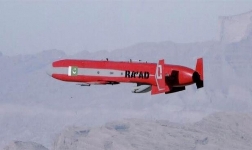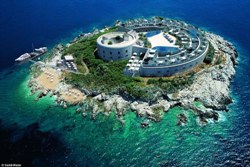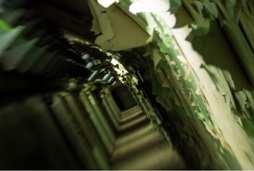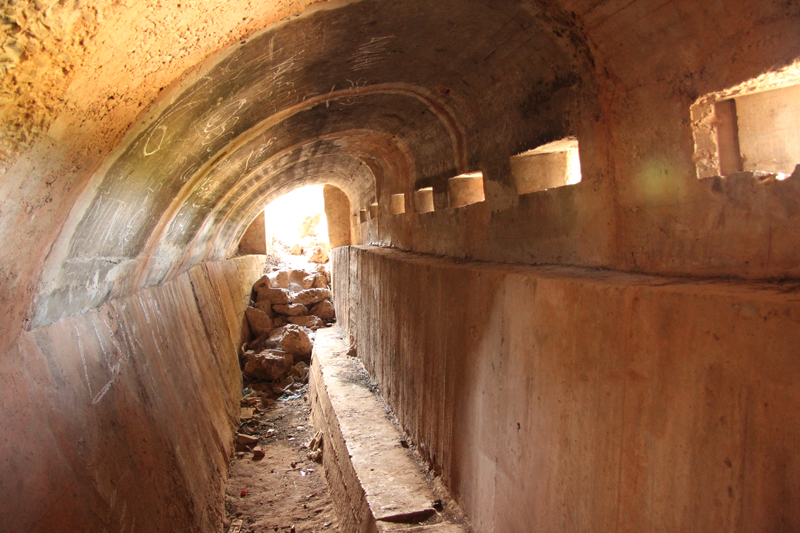
El Cabesonet. Interior de la galería blindada.
José V. Durbán Aparisi. Historiador y
documentalista de la Línea Defensiva de Valencia.
Esteban Clemente Micó. Administrador de la página
RESUMEN
.-
Durante el desarrollo de la Batalla de Levante, con el
objeto de la defensa de Valencia, se planifican por los
mandos republicanos, diversas obras de fortificación que
conocidas como Defensa Inmediata a Valencia, tienen como
objetivo detener el avance enemigo ante su idea de
ocupar Valencia. El estudio y planificación detallada de
la defensa de la denominada Zona 1ª quedaron ampliamente
documentados, se presentan los resultados de la
investigación de dichos documentos.
PALABRAS CLAVE
.-
Guerra Civil española, Batalla de Levante, Defensa de
Valencia, Línea de Defensa Inmediata a Valencia, Línea
Puig – Los Carasoles, Puig, Rafelbuñol.
Astract:
During the development of the Battle of Levante, with
the aim of defending Valencia, various works of
fortification known as “Immediate defense to Valencia”
were planned by Republicans controls, aimed to stop the
enemy from advancing with the idea of occupying
Valencia. The study and details planning for advancing
defense of the so-called 1st Zone were well documented,
the results of the investigation of such documents are
presented here.
Key words:
Spanish Civil War, Battle of Levante, Defense of
Valencia, Immediate line of defense for Valencia, Line
Puig-Les Carasoles, Puig, Rafelbuñol.
El presente trabajo se encuadra dentro de la Batalla de
Levante (1938) que dio lugar a la defensa de Valencia,
donde el estudio minucioso por las autoridades militares
republicanas de las sucesivas líneas defensivas fueron
las que dieron solidez y continuidad a la defensa
republicana (Salas Larrazabal, 1973), lo que ha
permitido considerar el desenlace de la misma como una
victoria defensiva por parte del Ejército Popular de la
República (Galdón, 2010).
El estudio de líneas sucesivas por parte de los mandos
republicanos se concretó en el diseño y construcción de
un conjunto de líneas defensivas destinadas a defender
Valencia (Martínez Bande, 1977), que se iniciaban en
tierras de Teruel y tenían su continuidad por las
provincias de Castellón y Valencia hasta finalizar en
las inmediaciones de la propia ciudad de Valencia, donde
formaban la denominada por las autoridades militares
republicanas Defensa Inmediata de Valencia , las
referencia a este conjunto defensivo aparecen por
primera vez en el Informe Complementario al Superponible
Escala 1:200.000 de la Línea XYZ y Posteriores , del
Grupo de Ejércitos con fecha 29 de junio de 1938, donde
se hace una breve descripción de la Línea Puig–Los
Carasoles.
Los vestigios de estos conjuntos defensivos como
materialidad del conflicto forman parte del paisaje
cotidiano (González, A 2016, pp. 30), lo que ha
conducido al interés por su estudio y puesta en valor
desde inicios del siglo XXI, por parte de distintos
colectivos culturales e investigadores, en este contexto
se enmarcan las investigaciones iniciadas en 2006 con un
trabajo de campo unido a la búsqueda de fuentes
primarias en hemerotecas y archivos que han continuado
de forma ininterrumpida hasta la actualidad, trabajo que
se ha concretado en sucesivas publicaciones (Durbán, J.
2009, 2010, 2012, 2014, 2015), continuación de estas
investigaciones es el trabajo que a continuación se
presenta.
El presente trabajo está fundamentado en los distintos
documentos que a lo largo de estos años de investigación
se han logrado obtener del Archivo General Militar de
Ávila (AGMAV), centrándose en los documentos elaborados
por el Estado Mayor del Ejército de Levante, sobre la
Organización Defensiva de la 1ª Zona Puig-Rafelbuñol, en
los que se efectúa un estudio detallado del fundamento y
distribución de planes de fuego, fortificaciones, así
como de la distribución de fuerzas en dicha zona.
PLANIFICACIÓN DE LA DEFENSA INMEDIATA A VALENCIA 1ª ZONA
PUIGRAFELBUÑOL
Efectuado un reconocimiento previo el mando republicano
propuso, que la Línea Principal de Resistencia, debía
ser de Este a Oeste la delimitada por el nido de
ametralladoras existente en la playa del Puig, la
Pedredra, el Calvario, la Patá, Masía de la Bequeria, el
Cabesonet, la Cartuja, cruce del camino de la Maimona,
cruce del camino del Cementerio de Rafelbuñol con el que
iba a la Rambleta, los Germanells, la Cantera, y Masía
del Curro.
Este trazado se entendía por el mando republicano que
era el único que permitía la condición primordial que
desde la Línea Principal de Resistencia se consiguieran
vistas a vanguardia. El terreno por donde discurría la
Línea Principal de Resistencia, presentaba distintas
características. Era llano y sembrado de arrozales desde
la playa hasta la Cantera y se encontraba atravesado por
tres caminos transitables, el Camino dels Plans a
vanguardia de la Línea Principal de Resistencia e
inmediata a ella, el Camí de la Peralta que enlazaba el
Calvario con la Cantera y llegaba hasta la playa, y el
Camino del Puig al Mar; más al sur que reunía perfectas
condiciones de transito.
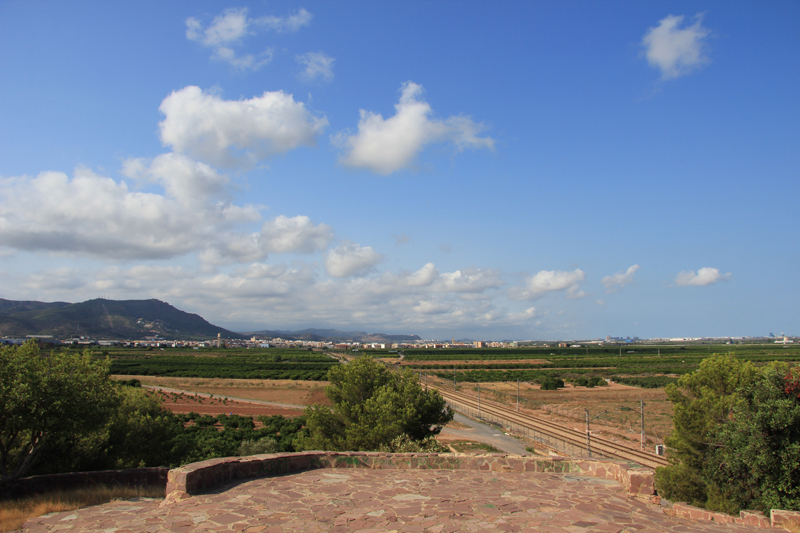 Observatorio
de El Cabesonet
Observatorio
de El Cabesonet
La Cantera, era un montículo, con una vertiente Este
inaccesible y con una altura de unos 180-200 metros. En
su parte más elevada se confirma que en la fecha de
elaboración del estudio defensivo se encontraban
instalados, un nido de ametralladoras (sin maquinas)
para dos maquinas, destinado a la defensa de la costa,
construido a prueba de impactos de 155 de
características análogas al construido en la playa, que
dirigía su plano de tiro hacia el mar. Existía además
inmediato al nido de ametralladoras donde se iniciaba la
Línea Principal de Resistencia en la playa, otro nido de
ametralladoras en construcción casi terminado, junto a
un puesto de observación de la D.E.C.A. sin ningún tipo
de organización defensiva, pero si con teléfono. A unos
dos cientos metros de la vertiente Oeste de la Cantera
comienza la vertiente Este del Calvario, que se une con
la Patá, estas dos colinas dominan completamente
el Puig. El terreno que se extendía a vanguardia de la
Patá y el Calvario, estaba formado por árboles frutales
formando bosque. Entre la Patá y el Cabesonet, se
encontraba la Masía de la Bequeria, de construcción
corriente, por lo que no podía resistir los efectos de
un bombardeo, estando al elaborar el documento,
organizándose defensivamente mediante la práctica de
aspilleras en las tapias del corral, también se estaba
construyendo un refugio para poder resistir un bombardeo
de 155 y en la casa podían alojarse hasta dos compañías.
El terreno a vanguardia de esta Masía, y el resto del
frente era de huerta con profusión de árboles poblados
que impedían absolutamente las vistas, por lo que se
proponía como necesario talar todos los arboles en una
profundidad de unos seiscientos metros, aprovechando los
troncos como piquetes para sujetar la alambrada que
resultaba necesario tender. El Cabesonet, es un
montículo inmediato al ferrocarril de Valencia a
Barcelona, aunque de poca altura que domina
absolutamente el trazado del ferrocarril indicado.
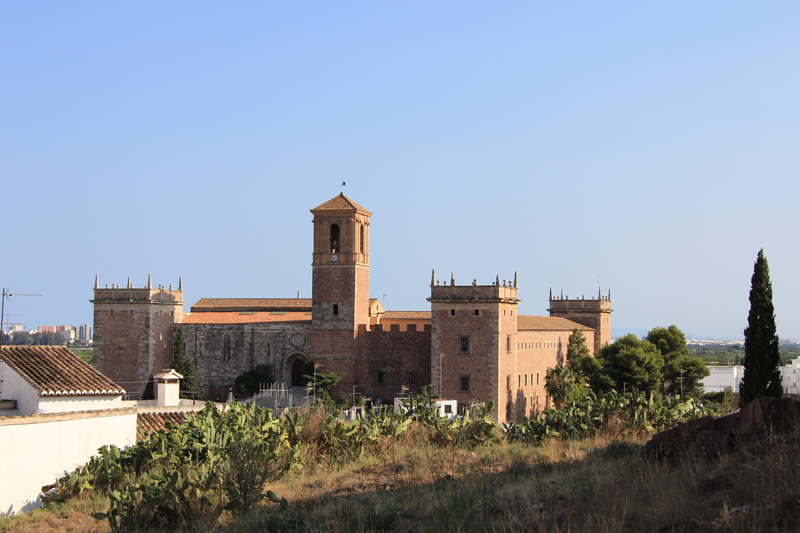
Monasterio – Observatorio y Puesto de Mando de Batallón
La Cartuja, es un edificio de construcción robusta, y
que previo su estudio se proponía habilitarse para
resistir los efectos de bombardeo de 105 y 155. También
podrían construirse refugios enterrados en sus amplios
patios y huertos interiores. Se encontraba rodeado por
una tapia de piedra y ladrillo donde podían practicarse
aspilleras y construirse asentamientos para maquinas
automáticas. Se proponía dejar la tapia a la altura de
un metro ochenta, para evitar los derrumbamientos de
material sobre las tropas defensoras puestas a cubierto
del paredón, trazando una zanja al pie de la tapia y por
su interior, que sirviera para establecerse en ella los
tiradores, sirviendo su torre de observatorio.
Entre la Cartuja y el Cabesonet pasa la carretera de
Valencia a Barcelona y la línea del ferrocarril Central
de Aragón. La carretera pasa inmediata a las tapias de
la Cartuja. Los Germanells, son dos montículos separados
por unos trescientos metros, que tenían pendientes
pedregosas perfectamente accesibles. Se hacía constar
que si el enemigo en su avance consiguiera la posesión
del Cabes Bord, podría batir con fuego rasante de
artillería las pendientes Sur de los Germanells y con
fuego de flanco la Pedrera, el Calvario y la Patá.
FUNDAMENTOS EN QUE SE BASA LA INSTALACIÓN DE LAS
DISTINTAS POSICIONES ASÍ COMO DEL PLAN DE FUEGOS
Después de efectuado el reconocimiento del terreno se
llega por el responsable militar del informe a las
siguientes conclusiones: Resulta imposible instalar la
Posición de Resistencia, a cubierto de las vistas de los
observatorios terrestres enemigos ya que se trata en la
mayor parte del frente de terreno llano y porque todos
los montículos que en él se encuentran son de
contrapendiente poco extensa, de lo cual se deduce que
resulta imprescindible situar la Posición de Resistencia
en sus dos líneas, la principal y la de sostenes,
precisamente en la vertiente orientada al enemigo. Esta
situación de la Línea Principal de Resistencia conlleva
una serie de inconvenientes, aunque no existía otra
opción. Los observatorios tienen que estar
obligatoriamente instalados en la Posición de
Resistencia, ya que a retaguardia de la misma el terreno
no se presta para ello.
Como es lógico se esperaba que el enemigo concentrara
sus fuegos de destrucción y preparación sobre los
montículos de la Línea Principal de Resistencia, pues
resultaba fácil intuir que en ellos tenían que estar
enclavadas las máximas resistencias, en vista de lo cual,
se proponía para aminorar los efectos destructores de
los bombardeos enemigos la siguiente organización
defensiva:
a) Instalación de abrigos a prueba para todos los Grupos
(de dos máquinas) de ametralladoras que constituyen el
armazón del plan de fuegos, instalados de tal forma que
permitan tiros de flanco y enfilada; sobre la dirección
de las alambradas, y sobre las trincheras, para evitar
la instalación en ellas del enemigo si consiguiera
ocuparlas.
b) Instalación de atrincheramientos, en orden de
escaqueado, para un pelotón por cada tramo de trinchera
con el asentamiento para el fusil ametrallador (F.A.).
c) Construcción de abrigos para la tropa, con fácil
acceso a los atrincheramientos. d) Disminución al mínimo
de cuatro soldados por pelotón, por atrincheramiento
mientras se desarrolla el bombardeo preparatorio del
ataque enemigo.
e) Emplazamiento de las reservas de Batallón (una
compañía) formando un tercer escalón de la
organización defensiva en situación de espera, en
abrigos próximos a retaguardia de la Línea Principal de
Resistencia, preparados para efectuar contraataques
inmediatos dirigidos por el Jefe de Batallón, que no
tendrán otra misión que desalojar al enemigo de las
trincheras ocupadas.
f) Organización defensiva formando un cuarto escalón de
la organización defensiva a retaguardia de los Centros
de Resistencia (Batallones en reserva de Brigada), con
la misión de reforzar los contraataques dentro del
frente de sus Brigadas y caso de que el enemigo ocupara
la Línea Principal de Resistencia, constituir sirviendo
de base estos Batallones, una nueva Posición de
Resistencia, a la que se acogerían los elementos
recuperados de la Posición Principal.
g) Finalmente, una nueva organización defensiva, que
guarnecen las Brigadas de reserva de las Divisiones (una
Brigada por División), que además son elementos móviles
para emplearlos en la forma que disponga el mando, y que
permitan establecer una nueva Posición de Resistencia
que ofrecer al avance enemigo. Estas reservas de Brigada
(quinto escalones de la Organización Defensiva) serian
reforzados por las tropas de la 3ª División, constituida
como reserva general del Cuerpo de Ejército. Se ha de
tener en cuenta que la maniobra empieza para un Ejército,
en situación defensiva cuando el enemigo ha conseguido
apoderarse de la Línea Principal de Resistencia, y por
tanto se impone la defensa en profundidad.
En cuanto a la Artillería, se proponía estudiar los
asentamientos de las distintas Baterías, para que
pudieran coadyuvar con sus fuegos a las Barreras de
Fuegos de la Línea Principal de Resistencia y a las
distintas barreras que se estudiaran para la defensa del
interior de la posición. Siguiendo estos principios se
organizaba el terreno la siguiente forma: De Este a
Oeste, donde se encontraba una zona de arrozales y llana
de unos 2000 metros que imposibilitaba un avance enemigo
excepto por la estrecha zona de la playa, e impedía de
igual forma el uso de tanques, impidiendo también
cualquier obra de fortificación, excepto en los terrenos
duros generalmente dedicados a las eras. Podía temerse
un desembarco marítimo, así como un fuego de flanco por
bombardeo marítimo, así como el bombardeo aéreo. Por
estas características se aconsejaba la organización
defensiva de esta zona en base a nidos de ametralladora
(para dos máquinas cada uno) dispuestas de forma que
permitieran, batir con sus fuegos todo el frente,
flanqueando unos a los otros, por ello se disponían
estos nidos de ametralladoras en dos líneas escaqueadas
irregularmente y además separados lo suficiente para que
dos de ellos no pudieran ser englobados en el mismo
fuego de una sola batería. Se aprovechaba para ello el
asentamiento para dos máquinas que ya estaba construido
en la playa para la Defensa de Costas, se proponían la
instalación de 15 nidos más en este frente con una base
de fuegos de una densidad aproximada a dos Centros de
Resistencia, proporción equivalente al frente de esta
zona.
Los nidos de ametralladoras debían de cumplir las
siguientes características:
a) Resistir impactos del calibre 155.
b) Capacidad suficiente para cinco o seis hombres, dos
sirvientes por maquina y un jefe; municiones para un día
de fuegos que según el reglamento se elevaba a 30.000
cartuchos por ametralladora, agua para dos días para la
refrigeración de maquinas y para beber los hombres (unos
50 litros) y víveres en frio para dos días. Era
necesario en estos nidos tener en cuenta la ventilación,
para conseguir una renovación de la atmosfera interior,
este factor era importantísimo pues a los pocos minutos
de fuego la atmosfera se haría irrespirable por la
enorme cantidad de Oxido de Carbono que se producía como
consecuencia del fuego, ya que cada cartucho producía un
litro. Esta parte del frente debía protegerse por
alambradas en forma de rollo,
ya que las corrientes de piqueta no podían sujetarse en
el terreno de arrozales.
CENTROS DE RESISTENCIA
Se organizaban tres Centros de Resistencia, por cada
Brigada. A los cuartos Batallones en reserva de las
Brigadas, se les asignaba como misión reforzar los
contraataques dentro del frente correspondiente a su
Brigada.
Los Centros de Resistencia, se organizaban en tres
Puntos de Apoyo, que guarnecían la Línea Principal de
Resistencia y la de Sostenes formadas por las reservas
de las Compañías. Únicamente las cuartas Compañías
formaban las reservas del Batallón (Centro de
Resistencia), que permanecían en situación de espera y
con misión de contraataques inmediatos en el frente del
Batallón (Centro de Resistencia) que debía dirigir el
Jefe de Batallón que situaba su P.P.C.C. en las
inmediaciones de las cuartas Compañías.
Los planes de fuego se fundamentaban con las
ametralladoras que constituyen su armazón. Estas
ametralladoras se colocaban en dos líneas escaqueadas e
intercaladas en el sentido del frente y con la
profundidad conveniente. En la primera de estas dos
líneas, a dos grupos de máquinas se les asignaba como
misión principal los tiros de flanco pero solamente
cuando el enemigo se lanzara al asalto, permaneciendo
mientras tanto silenciosas. Los restantes grupos de
máquinas de ambas líneas tenían como misión principal,
contribuir a la Barrera Principal de Fuegos y como
secundaria, tiros lejanos de apoyo de fuegos en los
contraataques dentro de los frentes de Centros de
Resistencia a que pertenecían.
Las segundas líneas de ametralladoras se establecían a
retaguardia de la Línea Principal y a una distancia de
la misma que variaba entre los 800 y los 900 metros, con
objeto de contribuir a la Barrera Principal de fuegos
tirando por encima de las tropas. Por lo tanto esta
segunda Línea contribuiría a la Barrera Principal de
Fuegos desde una distancia de 200 metros a vanguardia de
la Línea Principal de Resistencia. También se les
asignaba como misión secundaria, siempre que no
existiera objetivo terrestre, a tres grupos de
ametralladoras por Centro de Resistencia el tiro contra
aeroplanos por debajo de 1000 metros. Los primeros,
segundo, y cuartos Batallones de la 1ª Brigada,
organizaban Centros de Resistencia, con misiones
especiales, en atención al terreno donde se encontraban
arrozales y playa. A los morteros de 81 se les buscaba
asentamiento en contrapendientes siempre que fuera
posible, de igual forma a los cañones de infantería se
les debía disponer de asentamientos adecuados. Unos y
otros contribuían con sus fuegos a la Barrera Principal,
como misión principal y como misión secundaria tiros
contra objetivos dentro del frente de su Centro de
Resistencia, bajo las órdenes del Jefe del Batallón. Se
imponía la defensa contra carros, mediante la
construcción fosos, resultando imposible practicarlos de
forma continua delante de toda la línea de alambradas
deberían practicarse debidamente enmascarados en
aquellos lugares más fácilmente accesibles y sobre todo
delante de los emplazamientos de cañones de infantería y
piezas antitanque. Labores de enmascaramiento, se
llevarían a efecto en todas las obras de fortificación,
aprovechando los ramajes procedentes de talas del
arbolado delante de toda la Línea Principal de
Resistencia en una profundidad de unos 700 metros.
Destrucciones:
a) De todas las casas que se encontraban enclavadas
delante de la Línea Principal de Resistencia, en una
profundidad de unos 700 metros.
b) De la vías del ferrocarril del Central de Aragón y
del Norte por varios tramos.
c) De las carreteras general de Barcelona y de Náquera,
por varios sitios.
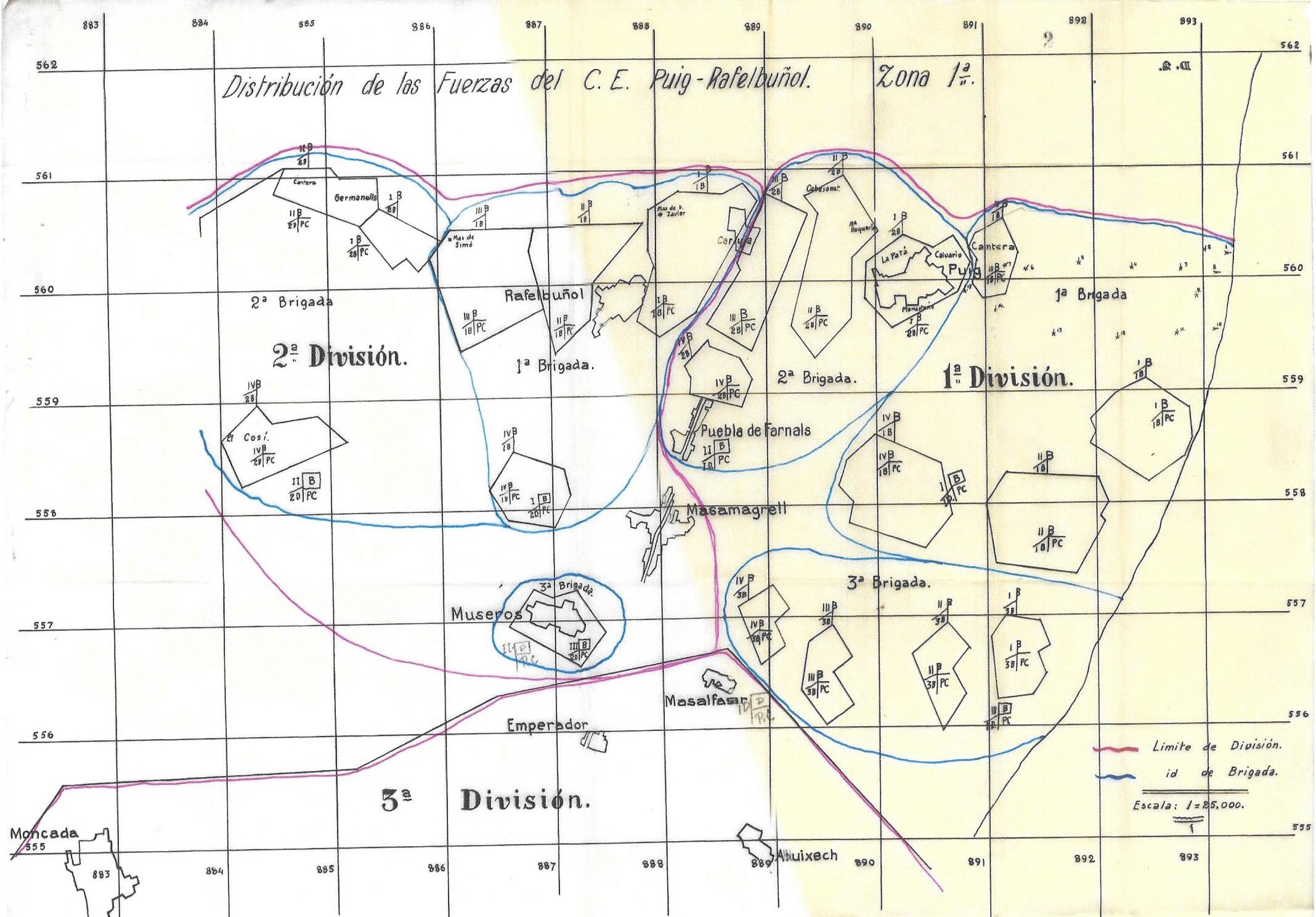
Mapa Distribución de Fuerzas (AGMAV, C. 597, 5, 3/2)
DISTRIBUCIÓN DE LAS FUERZAS DEL C.E. PUIG –RAFELBUÑOL Y
PLAN DE FUEGOS DE LA BARRERA PRINCIPAL
Teniendo en cuenta el estudio efectuado del terreno, las
instrucciones recibidas y los preceptos reglamentarios,
la distribución de fuerzas de este Cuerpo de Ejército
propuesto para ocupar y defender esta zona, era el
siguiente:
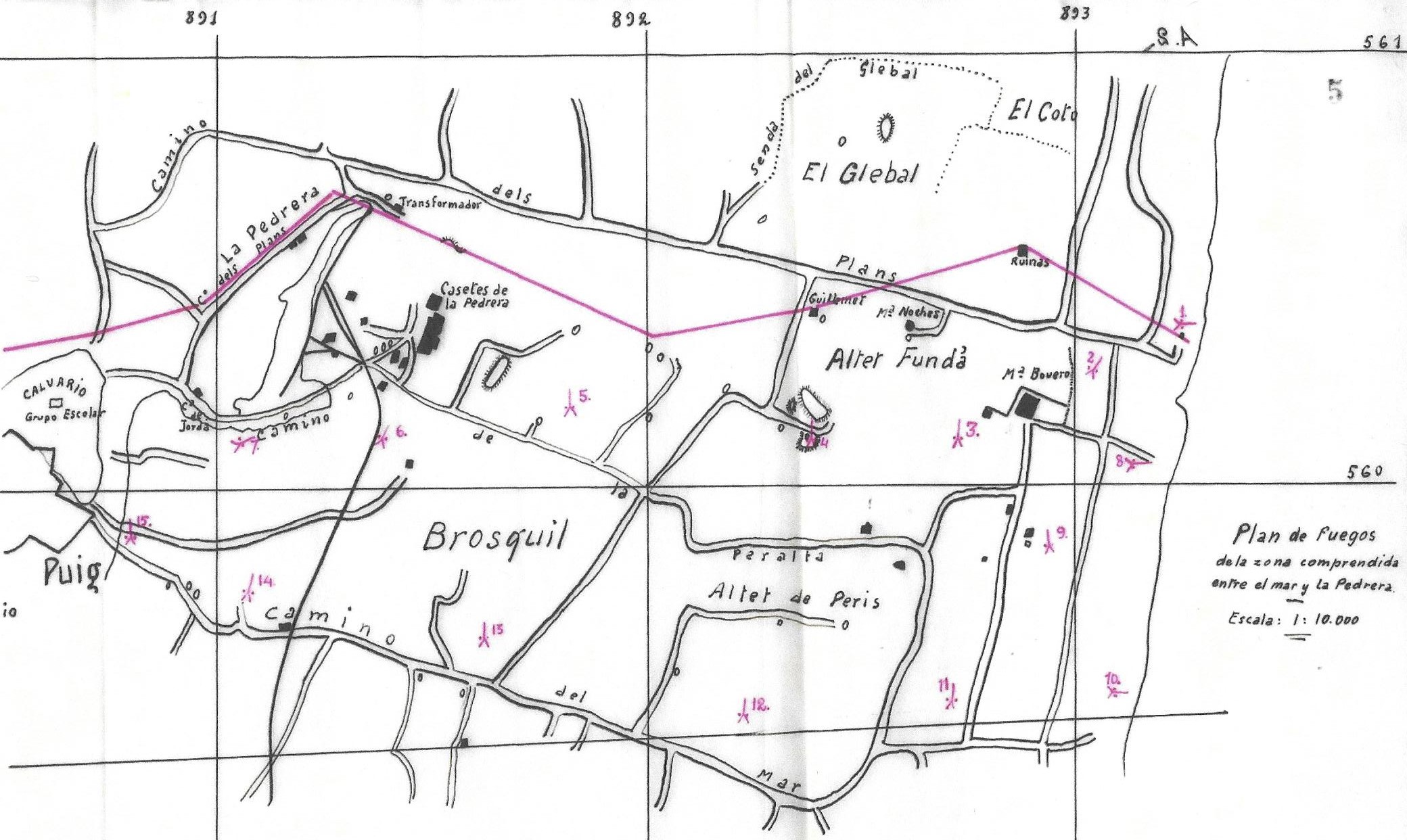
Mapa del plan de fuegos entre el mar y la pedrera (AGMAV,
C. 597 ,5, 3/5)
1ª DIVISIÓN CUERPO DE EJÉRCITO PUIG-RAFELBUÑOL (Sector
Este)
El terreno comprendido desde el mar hasta las
proximidades de la Cantera, se encontraba sembrado de
arrozales, por lo que era difícil que el enemigo
avanzara por esta parte del frente, ni tampoco era
factible efectuar contraataques a través del mismo por
nuestras tropas, por ello este sector no se ocupaba con
atrincheramientos, sino con abrigos a prueba de impactos,
para grupos de dos ametralladoras, aprovechando las
partes duras del terreno, en dos líneas, de forma que
las que se encontraban a retaguardia pudieran con sus
fuegos batir las entradas de los refugios de aquellos
grupos de maquinas que situados en la 1ª de estas dos
líneas.
1ª BRIGADA de la 1ª DIVISIÓN
1º BATALLÓN DE LA 1ª BRIGADA DE LA 1ª DIVISIÓN: En
cuarto escalón defensivo, tres compañías cubriendo la
Línea Principal de Resistencia con frente Norte y Este.
La cuarta compañía como reserva de Batallón en situación
de espera, en abrigos situados en las inmediaciones de
las casas del Poblado Marítimo del Puig. Misión:
Principal resistir el avance enemigo si se secaran los
arrozales y los posibles intentos de desembarque por la
playa y contraataques en su sector. Misión secundaria
vigilancia y defensa de la costa.
P.C. : En las casas de los Poblados Marítimos.
2º BATALLÓN DE LA 1ª BRIGADA DE LA 1ª DIVISIÓN: Formando
el Cuarto escalón en reserva de la Brigada, tres
Compañías en la Línea Principal de Resistencia formando
un centro de Resistencia con frente Este, entre el
camino de la Tanca y el camino de la Puebla de Farnals
al Mar. La Cuarta Compañía como reserva del Batallón, en
situación de espera, en abrigos construidos al efecto a
retaguardia del Camino de la Tanca.
Misión: principal defensa de la Costa, secundaria
contraataques de frente entre La Cantera y las Casetas
al Este de la Cantera. P.C.: A retaguardia del Camino de
la Tanca.
3º BATALLÓN DE LA 1ª BRIGADA DE LA 1ª DIVISIÓN: Centro
de Resistencia de la Pedrera, tres compañías en la Línea
Principal de Resistencia y la cuarta compañía de este
Batallón en la vertiente Sur de la Pedrera en reserva de
Batallón. Misión: Defender a toda costa la Cantera.
P.C.: En la vertiente Sur de la Cantera.
Observatorios: en la Pedrera
Trabajos: Asentamientos para ocho grupos de máquinas.
Trincheras: para las tres Compañías de la Línea
Principal de Resistencia, con un desarrollo como máximo
de cada trinchera, para pelotón, con asentamientos para
los Fusil Ametrallador (F.A.), asentamiento para un
mortero de 81 y asentamiento para un cañón de Infantería,
capaz de batir con sus fuegos el sector comprendido
entre el arrozal y la vertiente Este de la Pedrera.
Refugios: dos abrigos para 50 combatientes y un abrigo
de 100.
4º BATALLÓN DE LA 1ª BRIGADA DE LA 1ª DIVISIÓN: Formando
el cuarto escalón defensivo, constituiría un Centro de
Resistencia a la altura del Camino de Cebolla con un
frente aproximado de 1000 metros, con tres compañías en
la Línea Principal de Resistencia y la cuarta Compañía
como reserva del Batallón a retaguardia del camino de la
Cebolla en situación de espera, en abrigos.
Misión: Contraataque entre el Calvario y la Cantera.
P.C. : A retaguardia del Camino de Cebolla.
P.C: de la 1ª Brigada: Cruce del Camino de la Tanca y
Camino de Cebolla
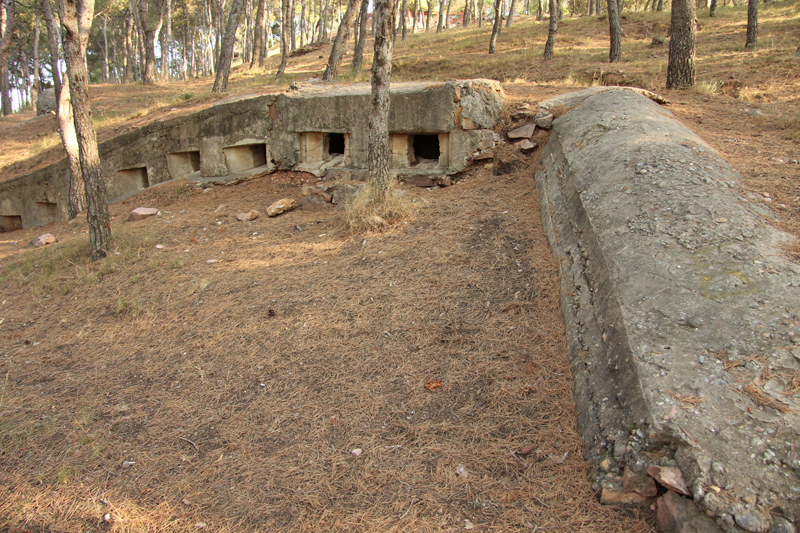
La Patà, Galería blindada para fusiles
2ª BRIGADA DE LA 1ª DIVISIÓN
1º BATALLÓN DE LA 2ª BRIGADA DE LA 1ª DIVISIÓN: Centro
de Resistencia El Calvario-La Patá-El Monasterio. Tres
Compañías en la Línea Principal de Resistencia y la
cuarta Compañía del Batallón, en situación de espera en
el Monasterio.
Misión del Batallón: conservar a toda costa, los puntos
que comprendía el Centro de Resistencia. La cuarta
compañía de este Batallón contraataques entre el
Calvario, La Patá y Oeste del Puig.
P.C.: En el Monasterio
Observatorios: En el Calvario, La Pata y Torre del
Monasterio.
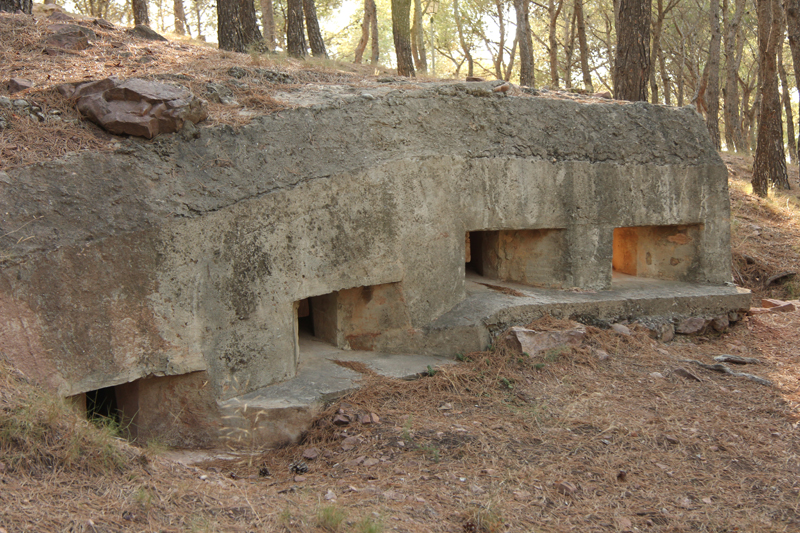 La
Patà, Galería blindada para fusiles
La
Patà, Galería blindada para fusiles
Trabajos: Asentamientos para ocho grupos de máquinas
automáticas.
Trincheras: para las tres Compañías de la Línea
Principal de Resistencia, con un desarrollo como máximo
de cada trinchera, para pelotón, con asentamientos para
los Fusil Ametrallador (F.A.), asentamientos para dos
morteros de 81 situados cada uno en la contrapendiente
de La Pata y El Calvario. Asentamiento para un cañón de
Infantería entre El Calvario y La Patá.
Atrincheramientos al Sureste del Puig para la Cuarta
Compañía, con los asentamientos correspondientes para
los F.A.
Refugios: dos abrigos de 50 combatientes, en el Punto de
Apoyo de la Patá y en el Punto de Apoyo del Calvario. Un
Abrigo de 100 Combatientes en el Monasterio.
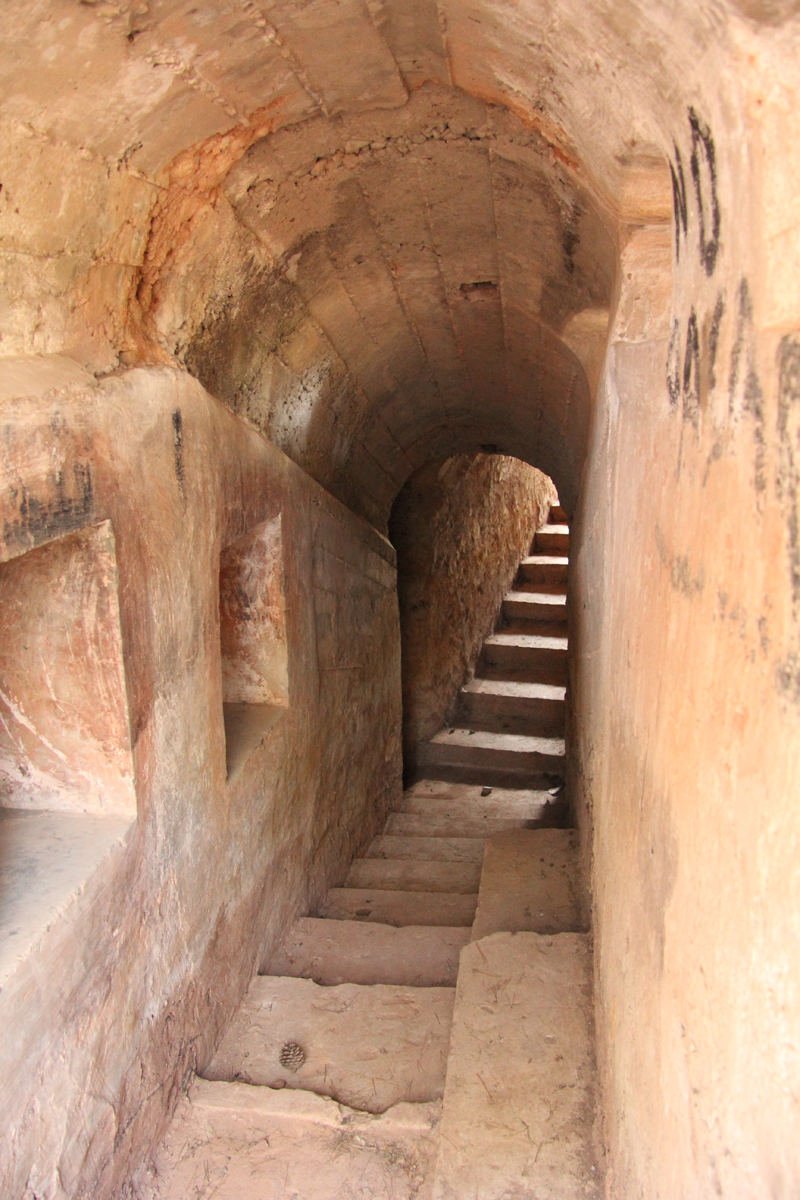
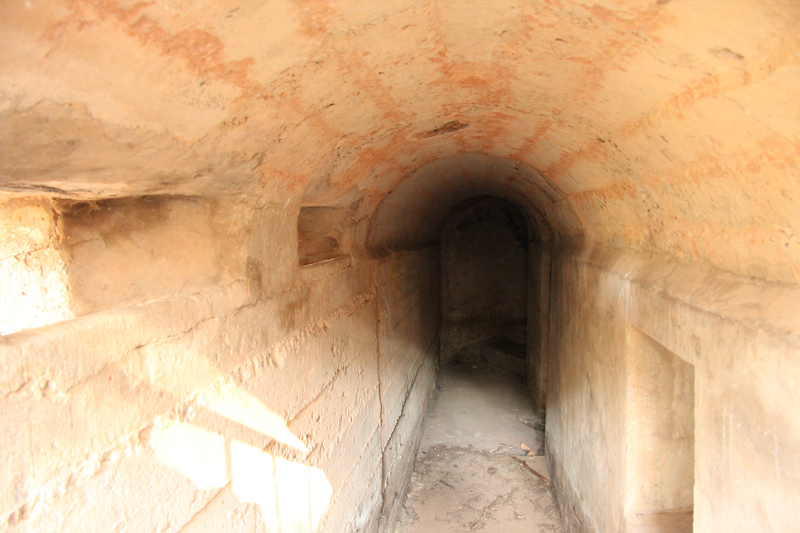 La Patà, interior de galería blindada y acceso a abrigo
La Patà, interior de galería blindada y acceso a abrigo
2º BATALLÓN DE LA 2ª BRIGADA DE LA 1ª DIVISIÓN: Centro
de Resistencia Masía Bequeria–Cabesonet, tres Compañías
en la Línea Principal de Resistencia. La cuarta Compañía
de este Batallón, en reserva en las inmediaciones de la
Estación y Fábrica de Conservas.
Misión del Batallón: conservar a toda costa, los puntos
que comprende el Centro de Resistencia. La cuarta
compañía de este Batallón contraataques entre La Patá y
El Cabesonet.
P.C.: Fábrica de Conservas.Observatorios: En la Masía de
Bequeria y en Cabesonet.
Trabajos: Asentamientos para ocho grupos de máquinas
automáticas.
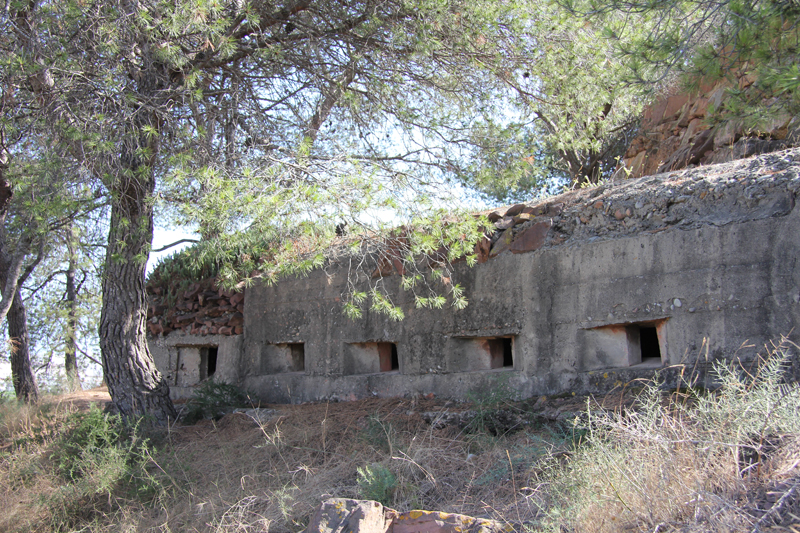
El Cabesonet. Galería blindada
Trincheras: para las tres Compañías de la Línea
Principal de Resistencia, con un desarrollo como máximo
de cada trinchera, para pelotón, con asentamientos para
los Fusiles Ametrallador (F.A.), asentamientos para dos
morteros de 81 situados uno en el Cabesonet y otro al
Noreste de la Fábrica de Conservas. Asentamiento para un
cañón de Infantería entre La Masía de la Bequeria y el
Cabesonet. Atrincheramientos para la Cuarta Compañía,
con los asentamientos correspondientes para los F.A.
Se plantea la necesidad de estudiar el asentamiento de
una sección de cañones antitanques que podría estar
situada junto a la Estación y que podría batir a
vanguardia de la Línea Principal de Resistencia el
sector comprendido entre la Patá y la vertiente Este del
Cabesonet.
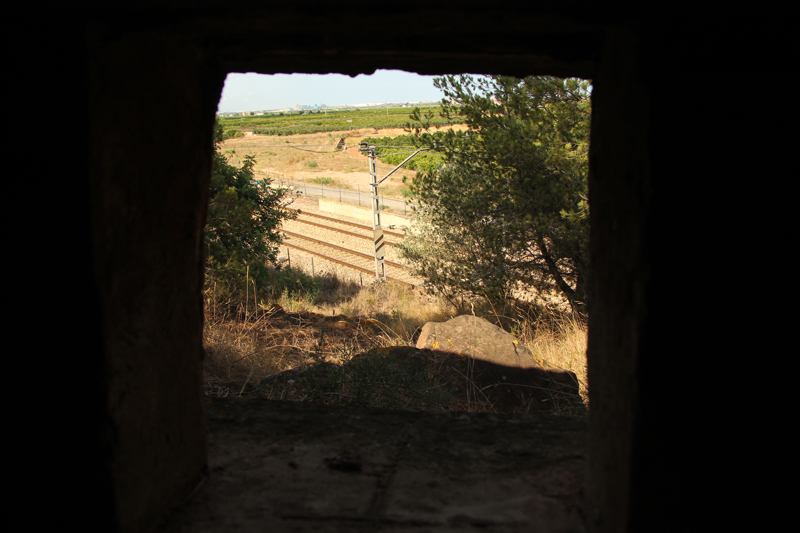
El Cabesonet. Galería blindada sobre la línea del
ferrocarril
Refugios: dos abrigos de 50 combatientes, en el Punto de
Apoyo de la Masía de Bequeria y en el Punto de Apoyo del
Cabesonet. Un Abrigo de 100 Combatientes junto a la
Fábrica de Conservas y otro de 50 al Sureste de la
Estación.
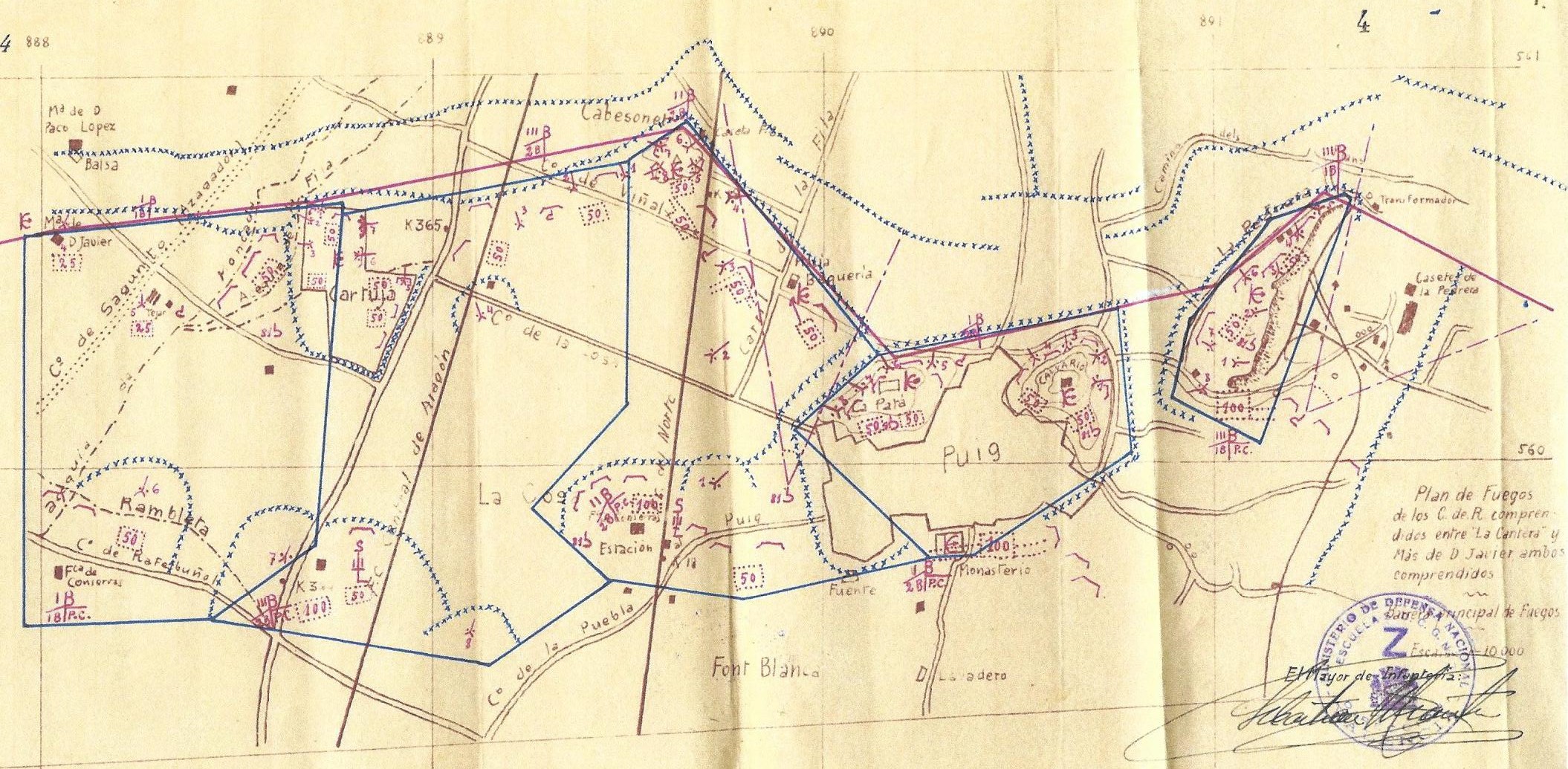
Mapa del Plan de Fuegos de los Centros de Resistencia
entre la Cantera y Más de D. Javier AGMAV C. 597, 5, 3/4
3º BATALLÓN DE LA 2ª BRIGADA DE LA 1ª DIVISIÓN: Centro
de Resistencia Mitad Este de la Cartuja y vertiente
Oeste del Cabesonet. Una compañía en La Cartuja, dos
Compañias en el terreno existente entre la Cartuja y el
Cabesonet. La cuarta Compañía de este Batallon, en las
proximidades del camino de Rafelbuñol en su cruce con la
Carretera de Valencia en situación de espera.
Misión del Batallón: conservar a toda costa, los puntos
que comprende el Centro de Resistencia. La cuarta
compañía de este Batallón contraataques entre El
Cabesonet y la Cartuja.
P.C.: Cruce del camino de Rafelbuñol con la Carretera de
Valencia.
Observatorios: En las dos torres de la Cartuja.
Trabajos: Asentamientos para ocho grupos de máquinas
automáticas.
Trincheras: para las dos Compañías de la Línea Principal
de Resistencia comprendidas entre la vertiente Oeste del
Cabesonet y la carretera de Barcelona. La tercera
Compañía se establecerá detrás de las tapias de la
Cartuja frentes Norte, Este y Sureste; donde se
establecerán dos grupos de ametralladoras. Se
practicaran aspilleras para los F.A: en las tapias del
Monasterio tras haber derrumbado las mismas hasta la
altura de un metro. Asentamiento para una sección de
artillería antitanque que pueda batir con fuegos los
accesos a la Carretera general de Barcelona y
Ferrocarril Central de Aragón cruzando sus fuegos con
otra sección instalada en el Centro de Resistencia de La
Masía de la Bequeria y el Cabesonet.
Atrincheramientos para la Cuarta Compañía, con los
asentamientos correspondientes para los F.A.
Refugios: dos abrigos de 50 combatientes, en el Punto de
Apoyo de la Cartuja y en el sector del Cabesonet.
Un Abrigo de 100 Combatientes junto a carretera general
de Barcelona y otro de 50 junto al Ferrocarril Central
de Aragón.
4º BATALLÓN DE LA 2ª BRIGADA DE LA 1ª DIVISIÓN: En el
límite Norte de la Puebla de Farnals, en situación de
espera, en abrigos. Formando el cuarto escalón defensivo.
Misión del Batallón: Reforzar y apoyar los contraataques
entre LaPata y La Cartuja.
P.C. En el límite Norte de la Puebla de Farnals.
P.C. de la Segunda Brigada: en la Puebla de Farnals.
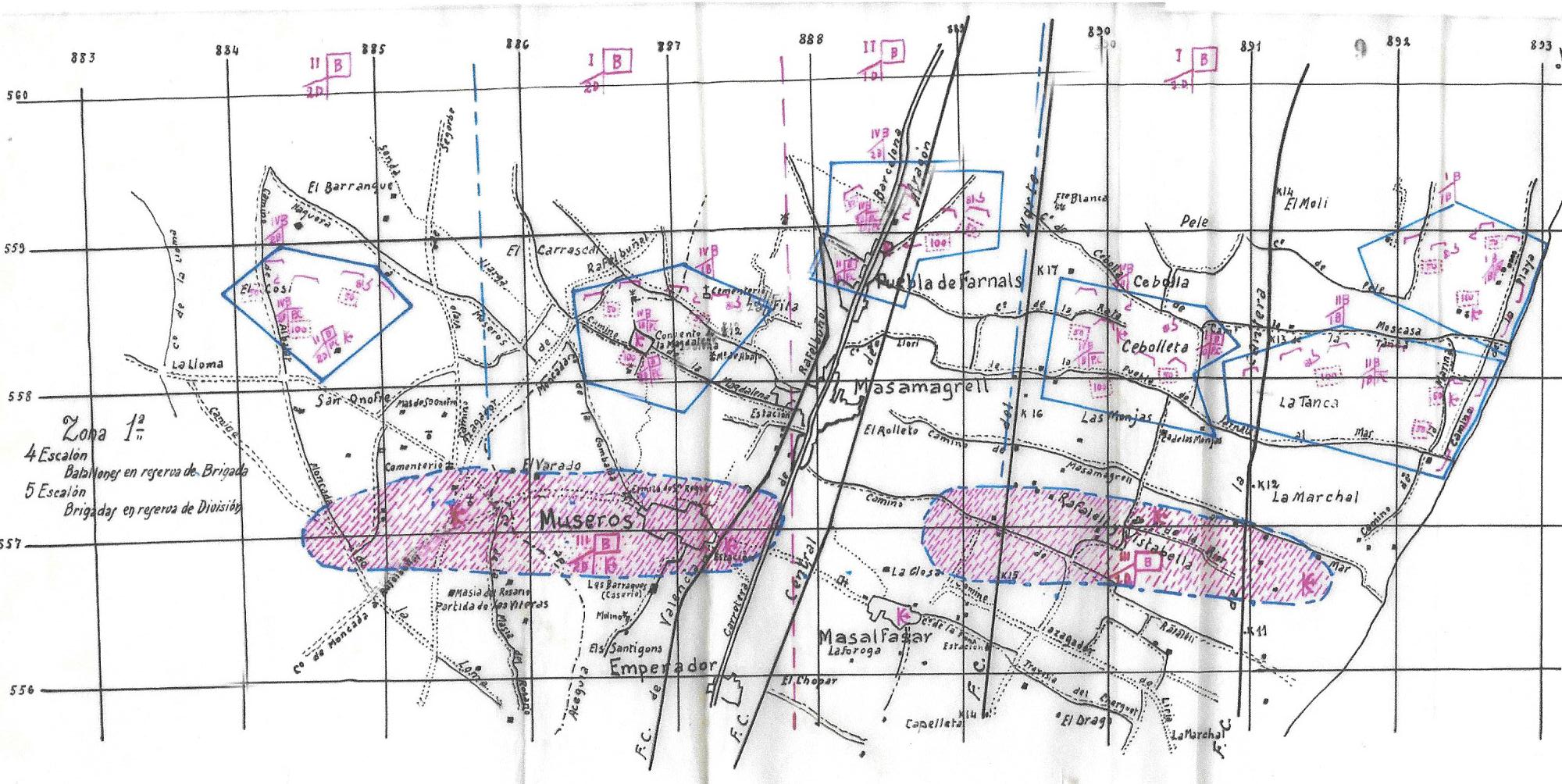
Mapa del 4º y 5º Escalón defensivo Zona1ª AGMAV, C. 597,
5, 3/9
3ª BRIGADA DE LA PRIMERA DIVISIÓN
Formando el Quinto escalón defensivo, a la altura del
camino de Massamagrell al mar, en formaciones
escaqueadas y en dos concentraciones de fuerzas en las
inmediaciones del F.C. de la Cantera del Puig y el F.C.
del Norte.
Misión: Reforzar los contraataques desde el mar hasta el
límite de la Cartuja
P.C.: Con una de las agrupaciones.
2ª DIVISIÓN DEL CUERPO DEL EJÉRCITO DEL PUIG-RAFELBUÑOL
(Sector Oeste)
1ª BRIGADA DE LA 2ª DIVISIÓN
1º BATALLÓN DE LA 1ª BRIGADA DE LA 2ª DIVISIÓN: Centro
de Resistencia Cartuja-Masía de D. Javier, tres
compañías en la Línea Principal de Resistencia, la
cuarta Compañía se establecerá en la Fábrica de
Conservas y a retaguardia del camino de
Rafelbunyol.
P.C.: Con la cuarta compañía.
Observatorios: En la Masía de D. Javier.
Trabajos: Asentamientos para siete grupos de máquinas
automáticas.
Una Compañía se establecerá detrás de las tapias de la
Cartuja frentes Sur, Oeste y Suroeste; donde se
practicarán aspilleras para los F.A. en las tapias del
Monasterio tras haber derrumbado las mismas hasta la
altura de un metro. Las otras dos Compañías de la Línea
Principal de Resistencia se establecerán con
atrincheramientos para pelotón como máximo. Una Sección
y un Grupo de Ametralladoras se establecerán en la Masía
de Don Javier donde se efectuaran los necesarios
trabajos de fortificación. Un grupo de ametralladoras se
instalara en una de las naves del Tejar. De las
observaciones realizadas se asegura que la Acequia de
Moncada que discurre por el subsector no es accesible al
paso de tanques ligeros.
Se construiría un asentamiento para Cañón de Infantería
entre el Tejar y la Acequia de Moncada, y un
asentamiento para mortero de 81 entre la Acequia de
Moncada y la Cartuja a retaguardia de esta.
Atrincheramientos para la Cuarta Compañía, con los
asentamientos correspondientes para los F.A.
Refugios: dos abrigos de 25 combatientes uno en el Tejar
y otro en la Masía de Don Javier, tres abrigos de 50
combatientes en el sector de la Cartuja, de ellos dos
dentro de esta. Un Abrigo de 50 combatientes entre la
Rambleta y el Camino de Rafelbunyol.
2º BATALLON DE LA 1ª BRIGADA DE LA 2ª DIVISIÓN: Centro
de Resistencia Masía de D. Javier excluido hasta el
Cementerio Nuevo comprendido. La cuarta Compañía a la
altura del Azagador de Rafelbunyol.
P.C.: Con la cuarta compañía.
Observatorios: En la torre de Rafelbuñol y en los
cementerios.
Trabajos: Asentamientos para siete grupos de máquinas
automáticas.
Atrincheramientos, para tres Compañías en la Línea
Principal de Resistencia y para la Cuarta Compañía en el
Azagador de Rafelbuñol, con los asentamientos
correspondientes para los F.A. Se construiría un
asentamiento para Cañón y mortero de 81 a vanguardia del
pueblo de Rafelbunyol.
Refugios: dos abrigos de 25 combatientes a ambos lados
del Camino de la Maimona y un abrigo de 100 en el
azagador de Rafelbunyol.
3º BATALLÓN DE LA 1ª BRIGADA DE LA 2ª DIVISIÓN: Centro
de Resistencia Cementerio Nuevo excluido -el Más de Simó
comprendido. Tres Compañías en la Línea Principal de
Resistencia y la cuarta Compañía, a la altura del camino
del Bogalar en situación de espera.Misión: Del Batallón,
la conservación del Centro de Resistencia, de la cuarta
Compañía, contraataques dentro de los límites del
subsector.
P.C.: Con la cuarta compañía.
Observatorios: En el Mas de Simó.
Trabajos: Asentamientos para seis grupos de dos máquinas
automáticas.
Atrincheramientos, para tres Compañías en la Línea
Principal de Resistencia y para la Cuarta Compañía en el
Azagador de Rafelbunyol, con los asentamientos
correspondientes para los F.A. Se construiría un
asentamiento para Cañón en la Rambleta y mortero de 81 a
retaguardia de esta.
Refugios: cuatro abrigos de 25 combatientes a
retaguardia de la Línea Principal de Resistencia y un
abrigo de 100 en el Bogalar.
4º BATALLÓN DE LA 1ª BRIGADA DE LA 2ª DIVISIÓN: Formando
el cuarto escalón, en las inmediaciones del Convento de
la Magdalena. Misión: Apoyar los contraataques dentro
del frente de la Brigada.
P.C.: Del Batallón, en el Convento de la Magdalena.
P.C.: De la 1ª Brigada en el Convento de la Magdalena.
2ª BRIGADA DE LA 2ª DIVISIÓN
1º BATALLÓN DE LA 2ª BRIGADA DE LA 2ª DIVISIÓN: Centro
de Resistencia desde el Más de Simó excluido -vertiente
Este de los Germanells comprendida. Tres Compañías en la
Línea Principal de Resistencia y la Cuarta Compañía en
la vertiente Sureste de los Germanells.
Misión: Del Batallón conservar el Centro de Resistencia
a toda costa, de la cuarta Compañía, contraataques en el
frente del subsector.
P.C.: Del Batallón , con la Cuarta Compañía.
Observatorios: En los Germanells. Trabajos:
Asentamientos para ocho grupos de máquinas automáticas.
Atrincheramientos, para tres Compañías en la Línea
Principal de Resistencia y para la Cuarta Compañía en la
vertiente Sureste de los Germanells, con los
asentamientos correspondientes para los F.A. Se
construiría un asentamiento para Cañón de Infantería en
el Azagador de Segorbe y para mortero de 81 a en la
contrapendiente Sur de los Germanells.
Refugios: tres abrigos de 25 combatientes a retaguardia
de la Línea Principal de Resistencia y un abrigo de 100
al Sureste dels Germanells.
2º BATALLÓN DE LA 2ª BRIGADA DE LA 2ª DIVISIÓN: Centro
de Resistencia vertiente Oeste de los Germanells –Cantera
comprendida. Tres Compañías en la Línea Principal de
Resistencia y la Cuarta Compañía en la vertiente
Suroeste de la Cantera.
Misiones: Del Batallón conservación del Centro de
Resistencia, de la Cuarta Compañía, contraataques entre
los Germanells y la Cantera.
P.C.: Del Batallón, con la Cuarta Compañía
Observatorios: En la Cantera.
Trabajos: Asentamientos para ocho grupos de máquinas
automáticas.
Atrincheramientos, para las Compañías. Se construiría un
asentamiento para Cañón de Infantería en el Camino de
Torres Torres a Masamagrell y para mortero de 81 a en la
contrapendiente Sur de la Cantera.
Refugios: dos abrigos de 25 combatientes en la Cantera y
un abrigo de 100 al Sur de la Cantera.
3º BATALLÓN DE LA 2ª BRIGADA DE LA 2ª DIVISIÓN: Centro
de Resistencia vertiente Suroeste de la Cantera excluida
a la Carretera Naquera-Massmagrell incluida. Punto de
unión con el C.E. del Oeste.
4º BATALLÓN DE LA 2ª BRIGADA DE LA 2ª DIVISIÓN: a la
altura del Cosí en situación de espera en los abrigos
correspondientes. En cuarto escalón defensivo
Misión: Apoyar los contraataques en el frente de la
Brigada y sobre el Punto de Unión (Zona de Enlace) con
el C.E. Oeste.
P.C.: Del Batallón en el Cosi.
P.C. De la 3ª Brigada: en el Cosi.
3ª BRIGADA DE LA SEGUNDA DIVISIÓN
En situación de espera en Museros, formando el quinto
escalón defensivo.
Misión: Apoyar los contraataques en el frente de la
División.
3ªDIVISIÓN DEL CUERPO DE EJÉRCITO DEL PUIG-RAFELBUÑOL
En reserva del Cuerpo de Ejército, situada entre Moncada,
Foyos, Venta del Emperador, Masalfasar y Albuixec. Esta
División destacaría una Brigada a la posición avanzada.
CONCLUSIONES
De lo anteriormente expuesto se concluye, que la defensa
de la 1ª Zona Puig-Rafelbuñol, incluida dentro de la
Defensa Inmediata a Valencia, se planificó de forma
precisa y meticulosa mediante el reconocimiento previo
para determinar, sobre el terreno y el plano el trazado
de la Línea Principal de Resistencia, fundamentando las
distintas posiciones y planes de fuegos. Se planificó y
determinó minuciosamente la distribución de fuerzas del
C.E. del Puig–Rafelbuñol, encargado de la defensa de
dicha zona, situando las posiciones de cada una de sus
compañías, batallones, brigadas, divisiones, el Cuerpo
de Ejército y sus respectivos puestos de mando. Se
establecieron cada uno de sus Centros de Resistencia,
detallando los asentamientos de armas automáticas,
correspondientes a cada uno de los Centros de
Resistencia, donde se ejecutaron, la instalación de
alambradas, los atrincheramientos para pelotón con
fusiles ametralladores, los refugios, observatorios y
los asentamientos para cañón de infantería, mortero de
81 y baterías antitanque.
Se planificó una defensa en profundidad fundamenta en
cinco escalones defensivos. Cabe pensar que con la misma
precisión, se planificó el resto de la línea. Quizá, el
que habría sido el último baluarte de la batalla de
Valencia en 1938, espera su reparación como testimonio
de nuestro pasado reciente.
Notas:
AGMAV, C. 349, 4, 2/33
AGMAV, C.597, 5, 3/1
AGMAV, C. 349, 4, 2/30
Entre los colectivos culturales, que no han cesado en su
labor de reivindicar la protección del patrimonio bélico
de la Guerra Civil, es necesario mencionar, a la
sociación para la Recuperación de la Memoria Histórica,
la Coordinadora en Defensa de los Bosques del Turia, el
Ateneo Republicano de Paterna y el Ateneo de San Antonio
de Benagéber.
AGMAV, C. 597,5, 2/1-5
AGMAV, C. 597, 5, 2/6-9
AGMAV, C. 597, 5, 2/10-24
Bibliografía:
BURRIEL ALBERICH, J. M. y ROSELLÓ MESQUIDA, M., 2006: “El
patrimoni cultural de carácter arqueològic i l
´ensenyament”. La Revista. Nº4, Valencia, pp. 15 -17.
DURBÁN APARISI, J. V., 2009: “Vestigios de la Guerra
Civil. Los Carasoles en la línea de defensa inmediata a
Valencia”. Castillos de España, núms. 156-157-158-159.
Madrid, pp. 117-125.
DURBÁN APARISI, J.V., 2010: “Puig-Carasoles de línea de
acero a monumento por la paz”. Eines d´Innovació
Educativa, nº 13, Valencia, pp. 13-30.
DURBÁN APARISI, J.V., 2012: “La defensa en su
retaguardia. Origen y contexto de la construcción de la
Línea de Defensa Inmediata a Valencia”. La Guerra Civil
en el Alto Palancia. ICAP, pp. 349-394.
DURBÁN APARISI, J. V., 2014: “La línea de defensa
inmediata a Valencia: la movilització de la rereguarda
(1938-1939)”. Saó. Valencia, pp. 117-125.
DURBÁN APARISI, J. V., 2014: “Tipologías y estrategias
de la defensa de Valencia (1938-1939) Estudio del
punto de apoyo de San Antonio de Benagéber en el Centro
de Resistencia de la Vallesa de Mandor”. La Linde, Nº3,
pp. 64-87 (URL:http://www.lalindearqueologia.com/).
Acceso 20/06/2016.
DURBÁN APARISI, J.V., 2015: Valencia 1938-1939, Una ruta
republicana por la defensa de Valencia. El Pasquí,
Valencia.
GALDÓN CASANOVES, E., 2010: La Batalla por Valencia, una
victoria defensiva. Publicaciones de la Universidad de
Valencia,Valencia.
GONZÁLEZ RUIBAL, A., 2016: Volver a las trincheras, Una
arqueología de la Guerra Civil Española. Alianza
Editorial. Madrid.
MARTÍNEZ BANDE, J. M., 1977: La ofensiva sobre Valencia
Editorial San Martín, Madrid.
MEZQUIDA FERNÁNDEZ, M., 2013: “Arqueología de la Guerra
Civil, Una arqueología por asimilar”. La Linde,
Nº1, pp. 42-50 (URL:http://www.lalindearqueologia.com/).
Acceso 20/06/2016.
SALAS LARRAZÁBAL, R., 1973: Historia del Ejército
Popular de la República. Editora Nacional. Madrid.
Archivo General Militar de Ávila:
AGMAV, C. 349, Cp. 4, 2/29-30. Grupo de Ejércitos,
Informe complementario al superponible Escala 1:200.000
de la Línea XYZ y posteriores. 29 de junio de 1938.
AGMAV, C. 349, Cp. 4, 2/33. Superponible Escala
1:200.000 de la Línea XYZ y posteriores.
AGMAV, C.597, Cp. 5, 2/2-5. Ejército de Levante, Zona
nº1 Puig-Rafelbuñol, reconocimiento previo del terreno.
AGMAV, C.597, Cp. 5, 2/6-9. Ejército de Levante, Zona
nº1 Puig-Rafelbuñol. Fundamentos en que se basa la
instalación de las distintas posiciones, así como del
plan de fuegos. 24 de julio de 1938.
AGMAV, C.597, Cp. 5, 2/10-15. Ejército de Levante, Zona
nº1 Puig-Rafelbuñol. Distribución de fuerzas del C. E.
PUIG RAFALBUÑOL.
AGMAV, C.597, Cp. 5, 2/16-18. Ejército de Levante, Zona
nº1 Puig-Rafelbuñol. Asentamiento de máquinas
automáticas para el plan de fuegos correspondiente a los
Centros de Resistencia que se establecen entre la
Pedrera y el Más de Don Javier ambos comprendidos. 18 de
julio de 1937.
AGMAV, C.597, Cp. 5, 2/19-20. Ejército de Levante, Zona
nº1 Puig- Rafelbuñol. Asentamiento de máquinas
automáticas para el plan de fuegos correspondiente a los
Centros de Resistencia que se establecen entre el Más de
Don Javier y la zona nº2 (Museros-Moncada).
AGMAV, C.597, Cp. 5, 2/21-23. Ejército de Levante, Zona
nº1 Puig-Rafelbuñol. Cuarto escalón defensivo. 21 de
julio de 1937.
AGMAV, C.597, Cp. 5, 2/24. Ejército de Levante, Zona nº1
Puig-Rafelbuñol. Quinto escalón defensivo. 18 de julio
de 1937.
AGMAV, C.597, Cp. 5, 3/2. Ejército de Levante, Zona nº1
Puig-Rafelbuñol. Plano distribución de fuerzas del C. E.
PUIG RAFALBUÑOL.
AGMAV, C.597, Cp. 5, 3/3. Ejército de Levante, Zona nº1
Puig-Rafelbuñol. Plan de fuegos de los C. de R.
comprendidos entre el Más de D. Javier, excluido y los
Germanells.
AGMAV, C.597, Cp. 5, 3/4. Ejército de Levante, Zona nº1
Puig-Rafelbuñol. Plan de fuegos de los C. de R.
comprendidos entre la Cantera y el Más de D. Javier,
ambos comprendidos.
AGMAV, C.597, Cp. 5, 3/5. Ejército de Levante, Zona nº1
Puig-Rafelbuñol. Plan de fuegos de los C. de R.
comprendida entre el mar y la Pedrera.
AGMAV, C.597, Cp. 5, 3/9. Ejército de Levante, Zona nº1
4º y 5º Escalones.
AGMAV, C.597, Cp. 5, 3/1. Ejército de Levante, Defensa
Inmediata de Valencia, Zona nº1 Puig-Rafelbuñol, Cabes
Bord.
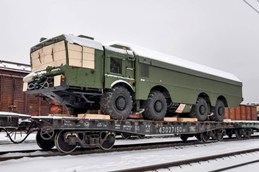 The
new K-300P Bastion-P mobile
coastal defence missile system was spotted on
Station Stroika in Moscow Region.
The
new K-300P Bastion-P mobile
coastal defence missile system was spotted on
Station Stroika in Moscow Region.
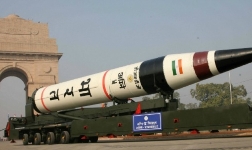
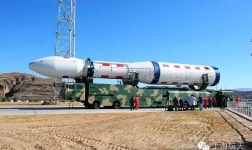
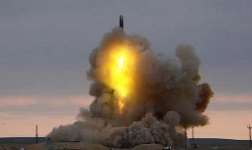
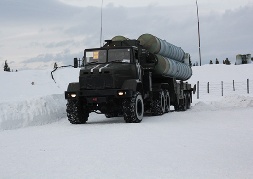
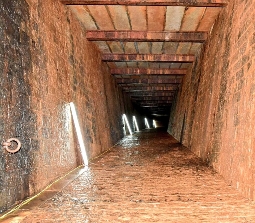
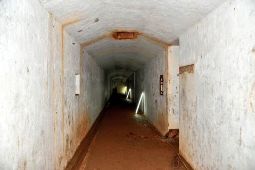
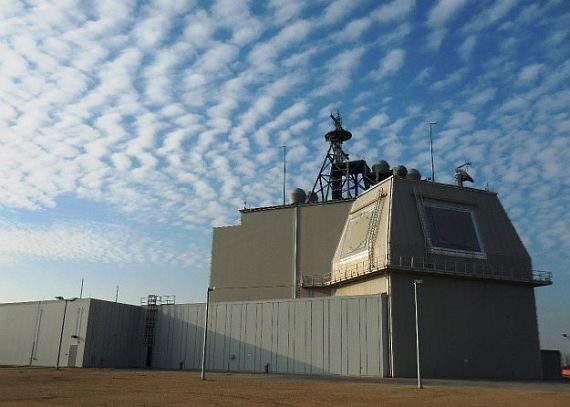 DAHLGREN,
Va., 10 August. 2016. U.S. missile-defense experts
starting to install electronic equipment at a new
anti-ballistic-missile site in northern Poland near the
Baltic coast. Officials of the U.S. Missile Defense
Agency (MDA) in Dahlgren, Va., announced a $36.4 million
contract Tuesday to the Lockheed Martin Corp. Mission
Systems and Training segment in Moorestown, N.J., to
install Aegis Ashore equipment at the missile-defense
site in Redzikowo, Poland. Aegis Ashore is the
land-based component of the Aegis ballistic missile
defense (BMD) system developed originally for deployment
at sea aboard specially equipped U.S. Navy Arleigh
Burke-class guided missile destroyers. Lockheed Martin
to install, integrate, and test Aegis Ashore equipment
in a deckhouse and deckhouse support building at the
Redzikowo, Poland, missile-defense site. Aegis is not a
military acronym, but is the name of the shield of the
Greek God Zeus.
DAHLGREN,
Va., 10 August. 2016. U.S. missile-defense experts
starting to install electronic equipment at a new
anti-ballistic-missile site in northern Poland near the
Baltic coast. Officials of the U.S. Missile Defense
Agency (MDA) in Dahlgren, Va., announced a $36.4 million
contract Tuesday to the Lockheed Martin Corp. Mission
Systems and Training segment in Moorestown, N.J., to
install Aegis Ashore equipment at the missile-defense
site in Redzikowo, Poland. Aegis Ashore is the
land-based component of the Aegis ballistic missile
defense (BMD) system developed originally for deployment
at sea aboard specially equipped U.S. Navy Arleigh
Burke-class guided missile destroyers. Lockheed Martin
to install, integrate, and test Aegis Ashore equipment
in a deckhouse and deckhouse support building at the
Redzikowo, Poland, missile-defense site. Aegis is not a
military acronym, but is the name of the shield of the
Greek God Zeus. 












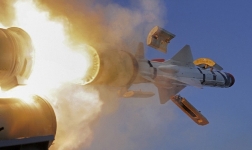 Exocet
MM40 Block 3 anti-ship missile fired from a FREMM
frigate (Image: MBDA)
Exocet
MM40 Block 3 anti-ship missile fired from a FREMM
frigate (Image: MBDA)
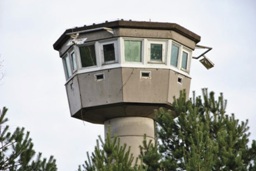
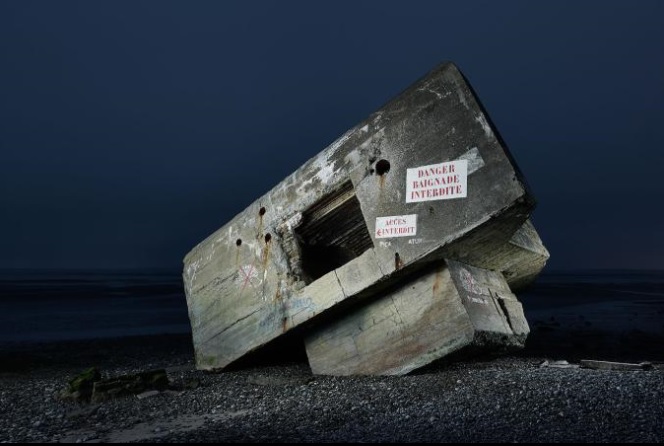
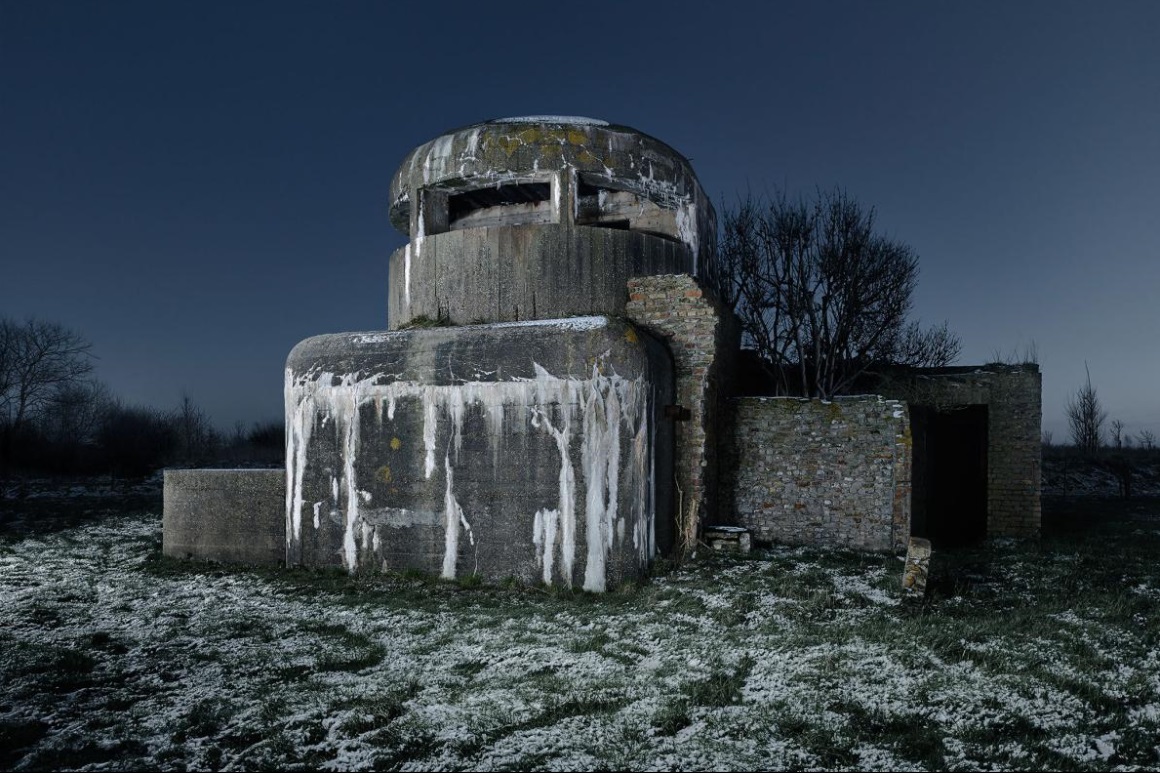
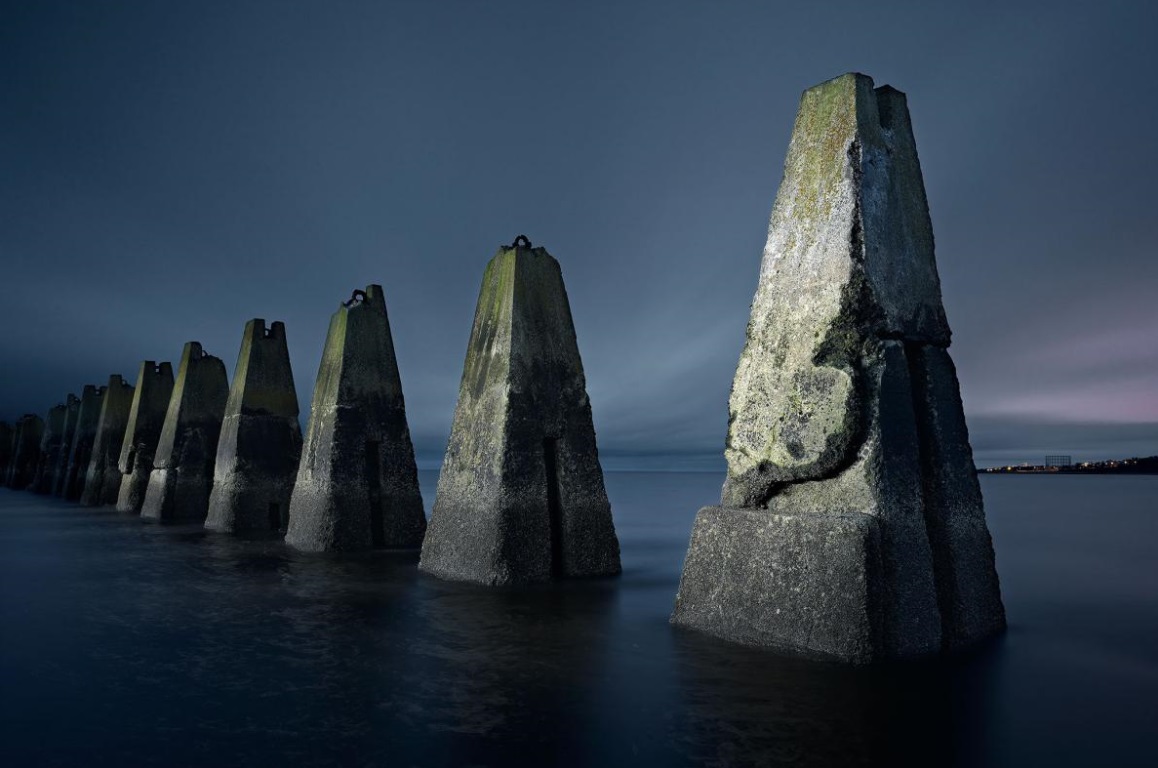
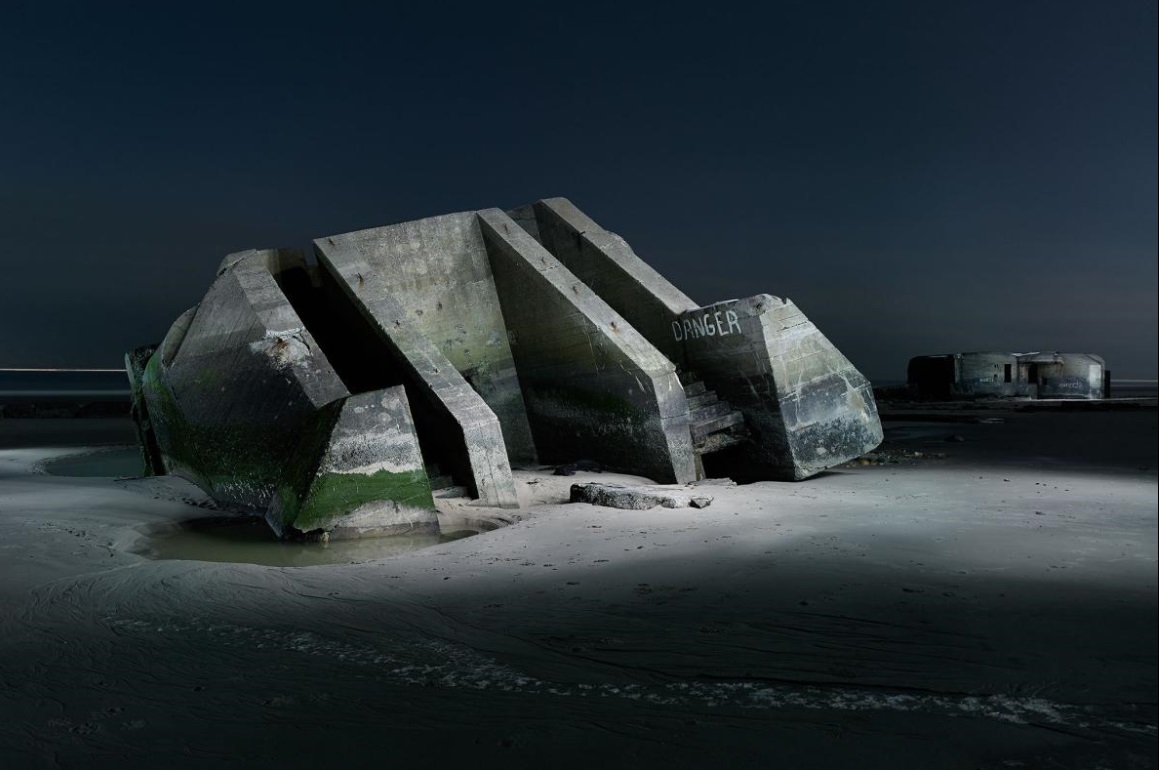
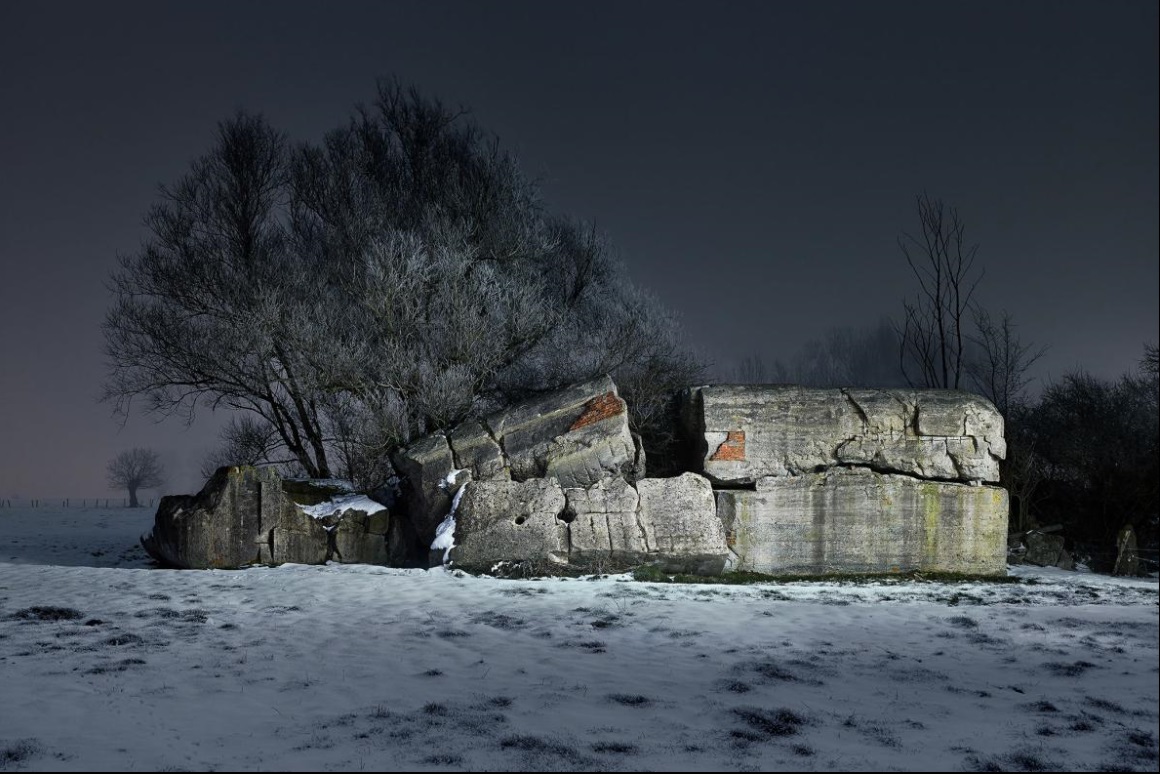
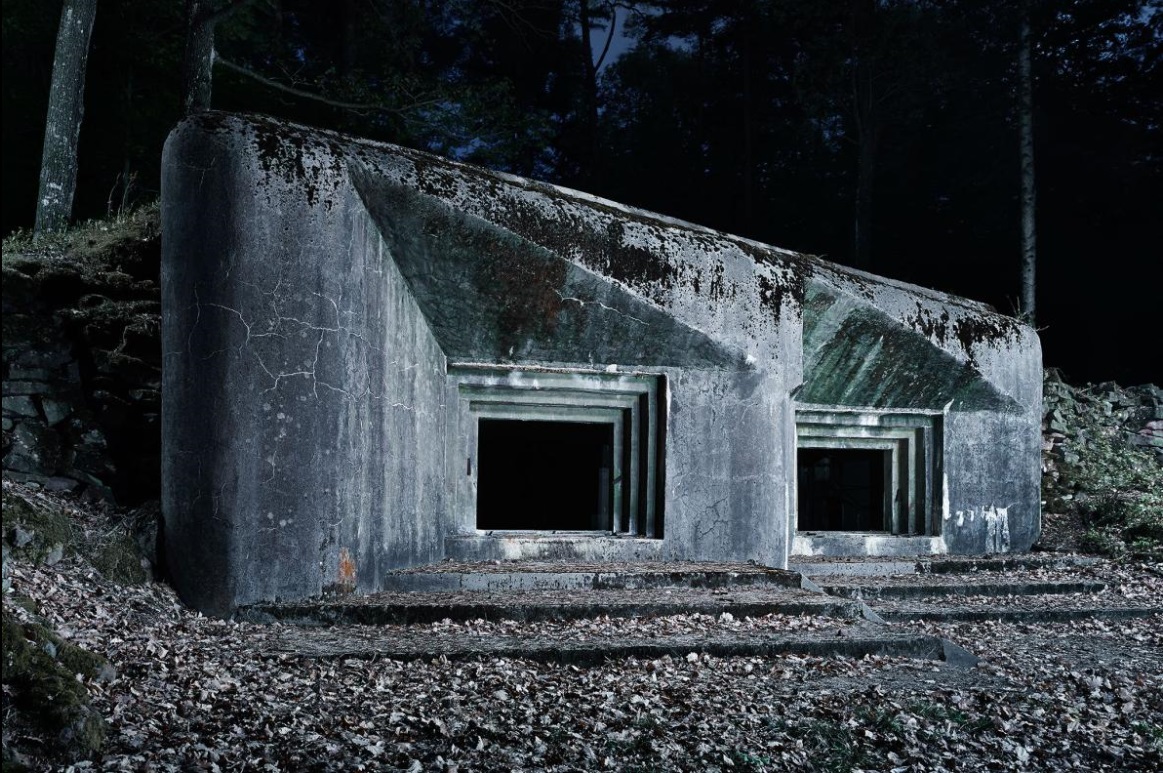
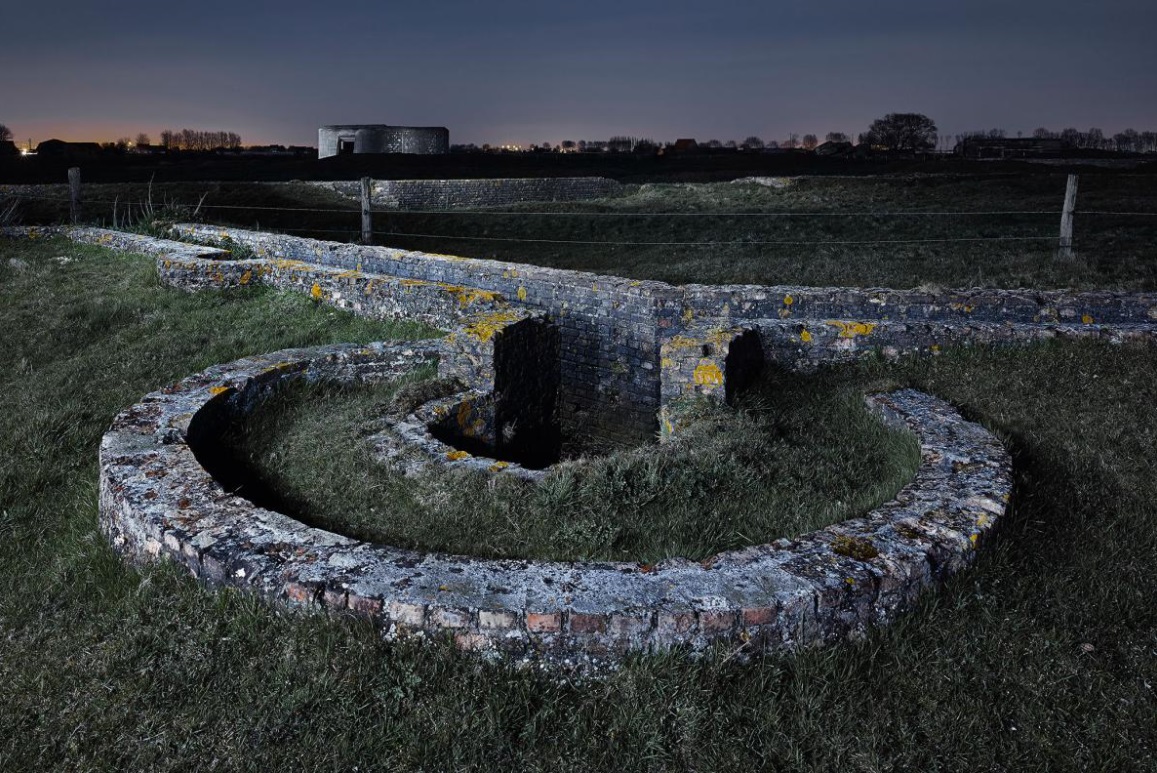
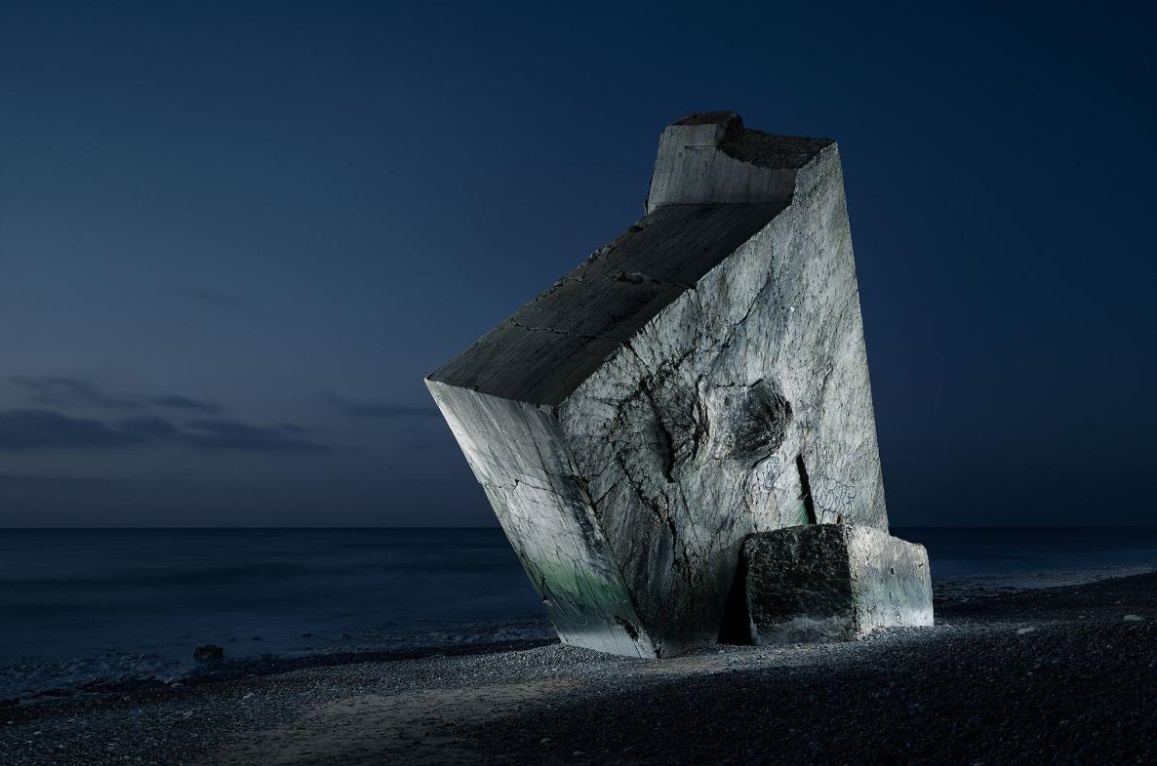
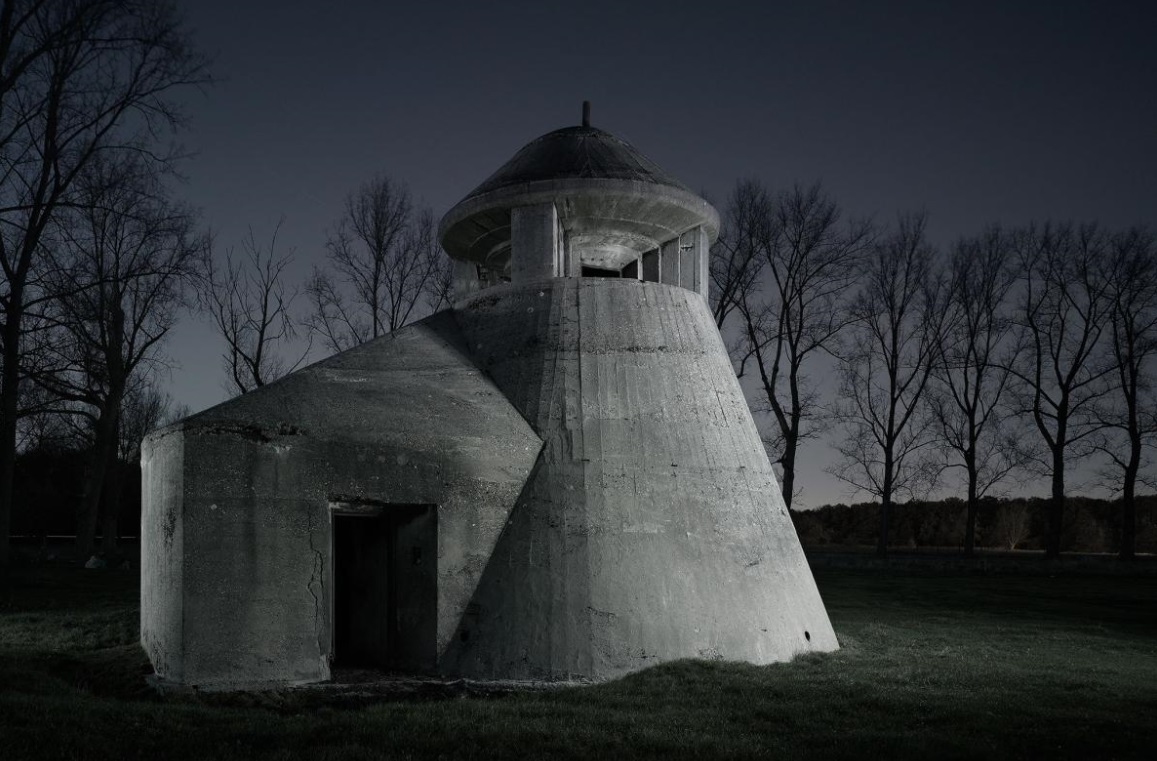
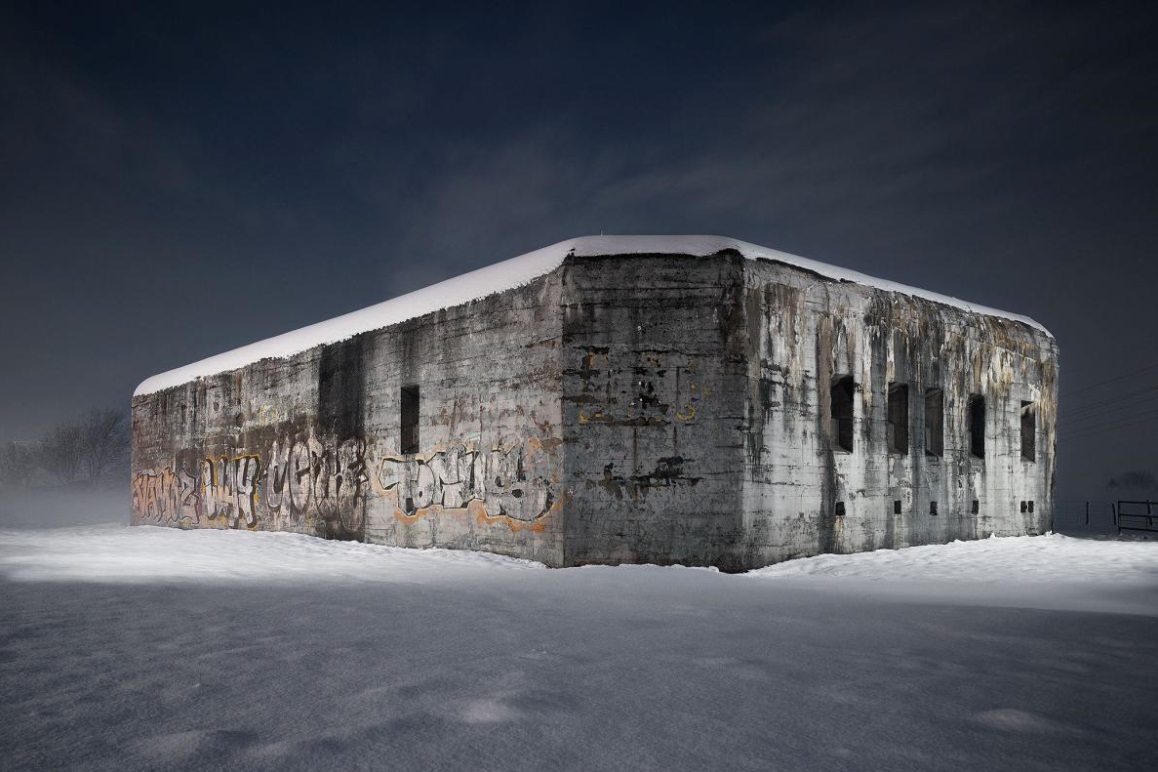
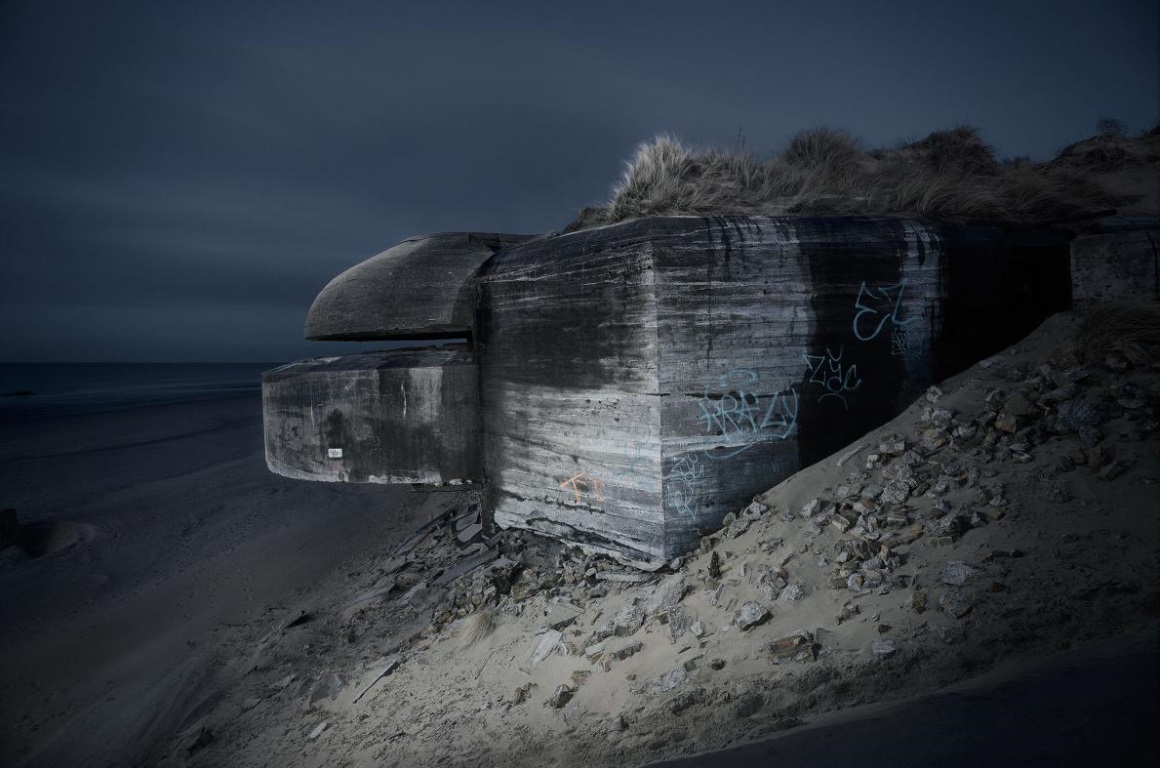
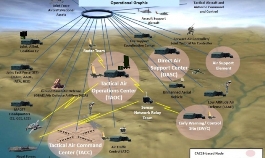
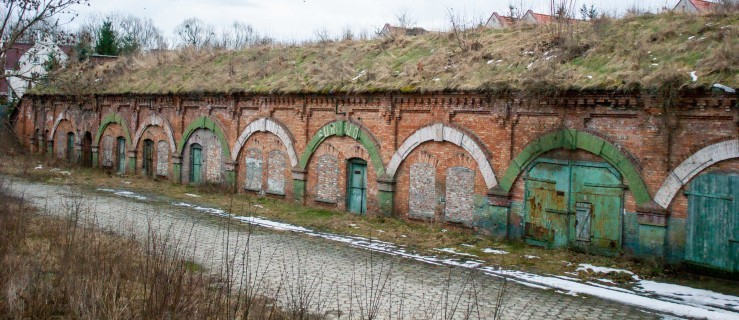
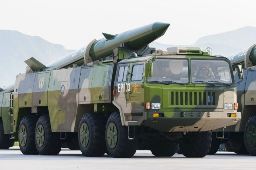
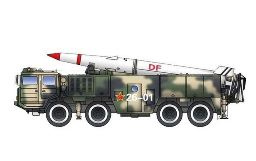
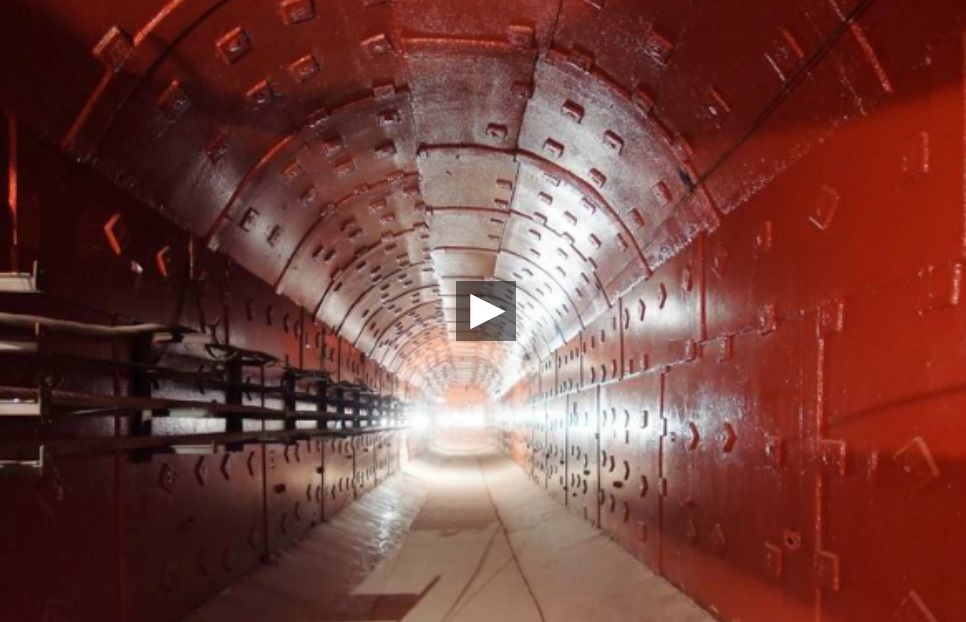
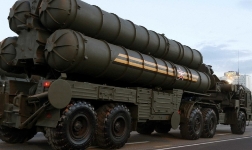

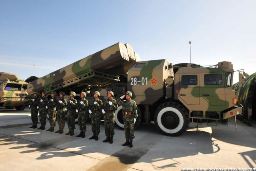
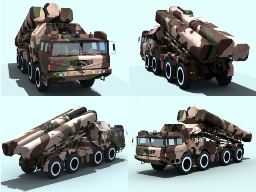 Missiles
Missiles